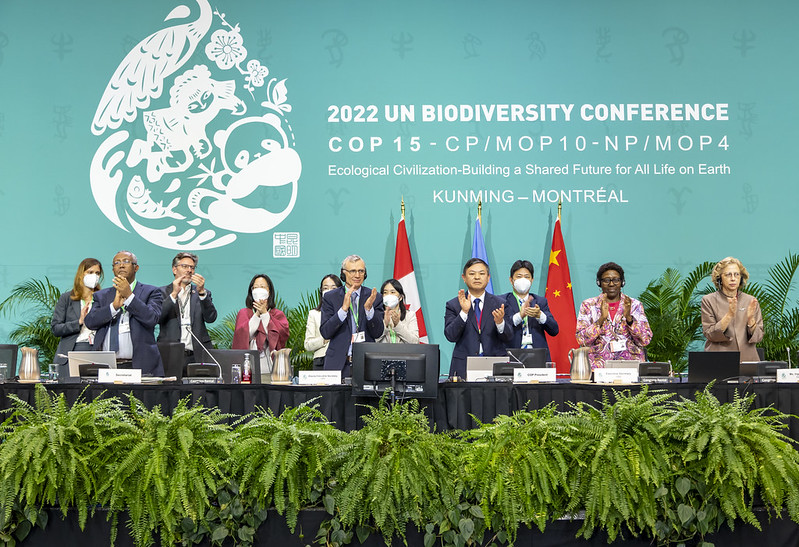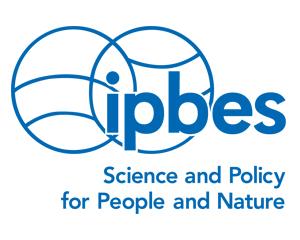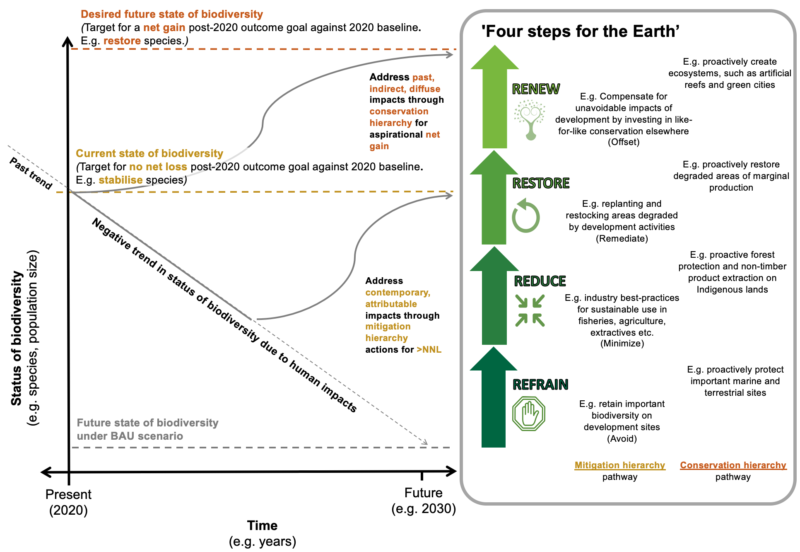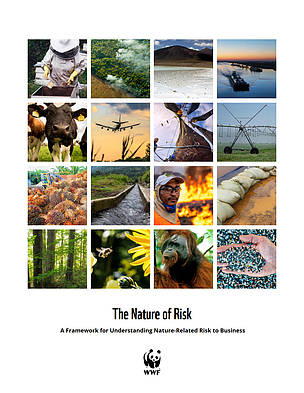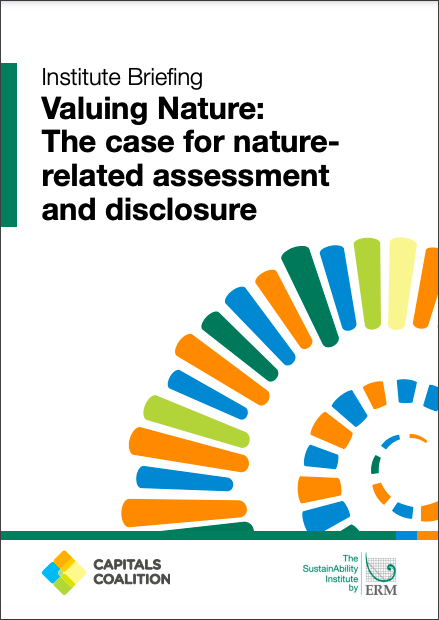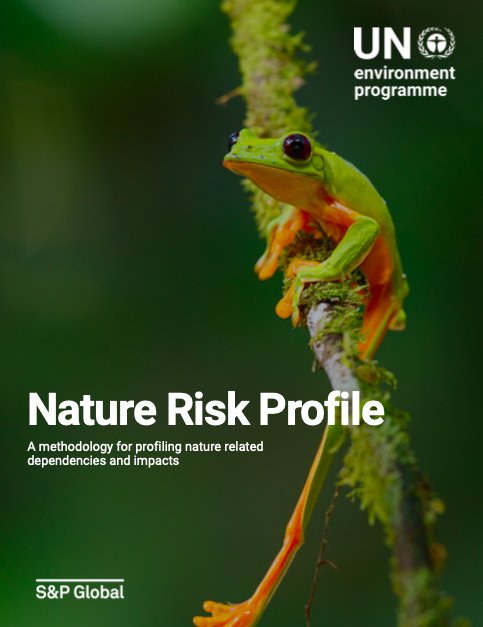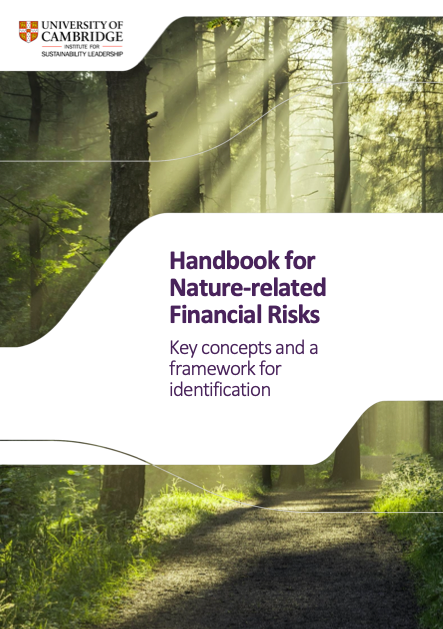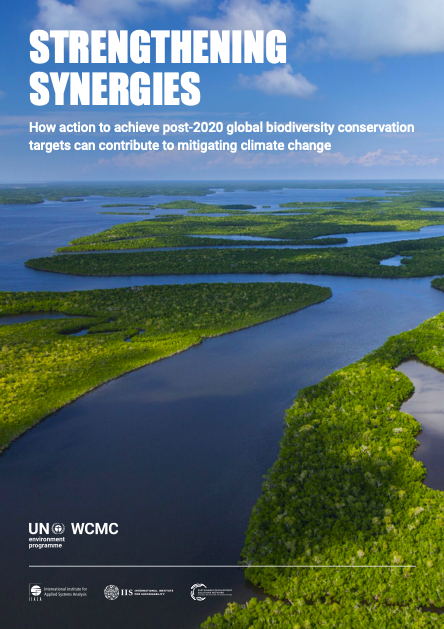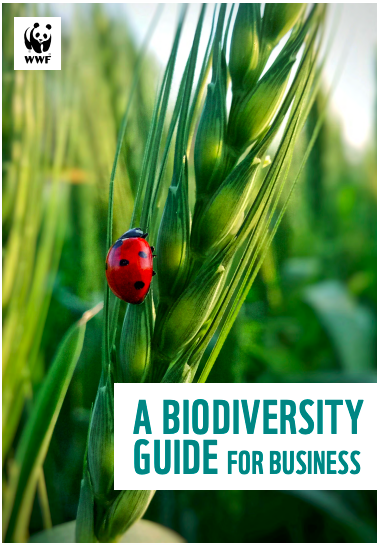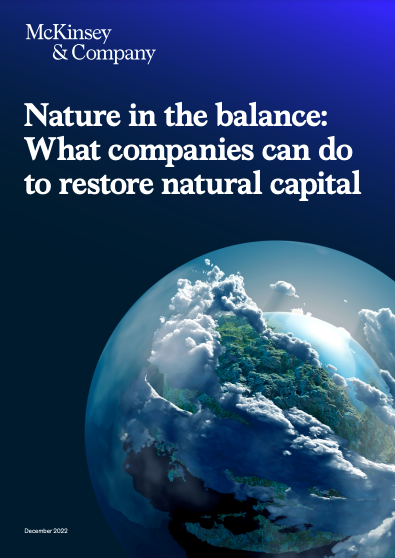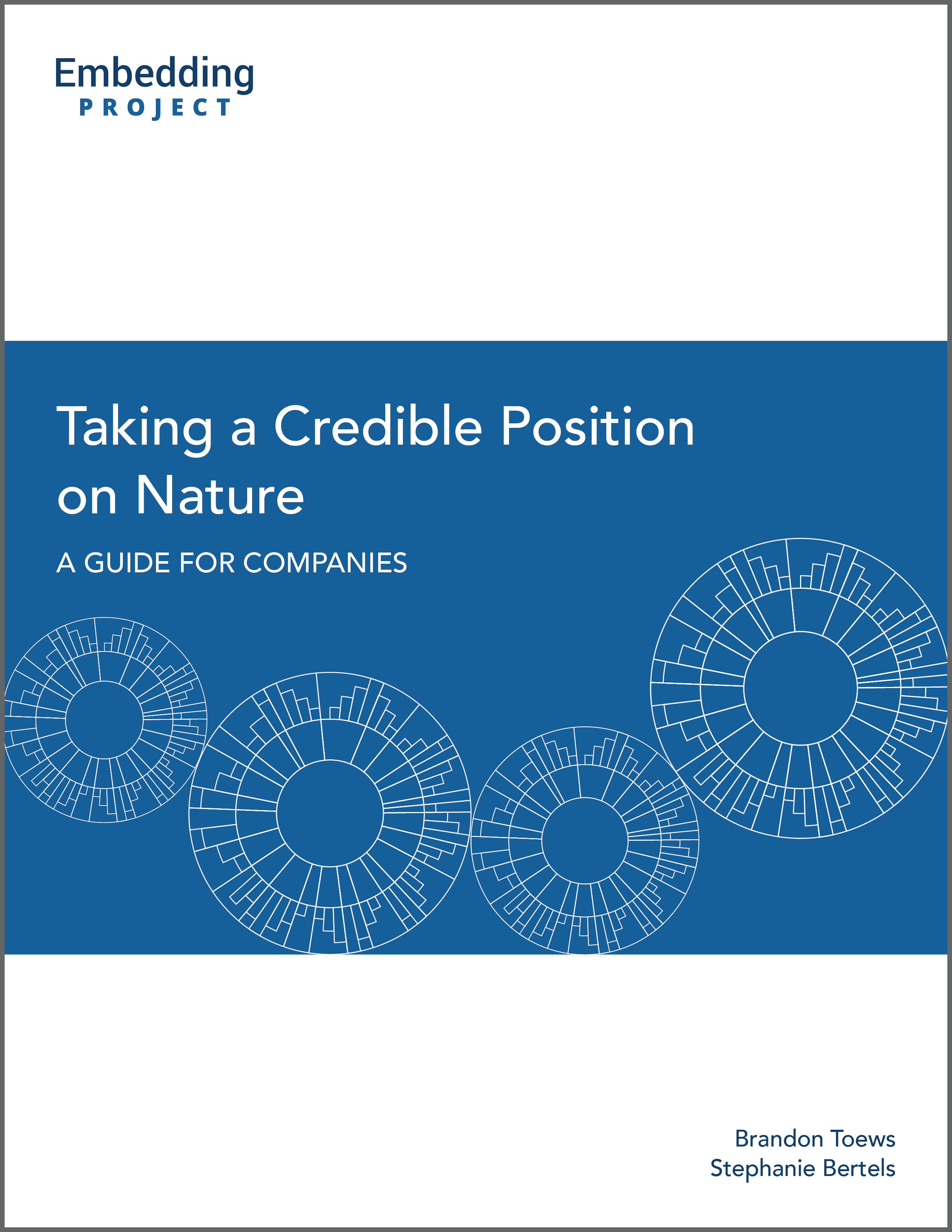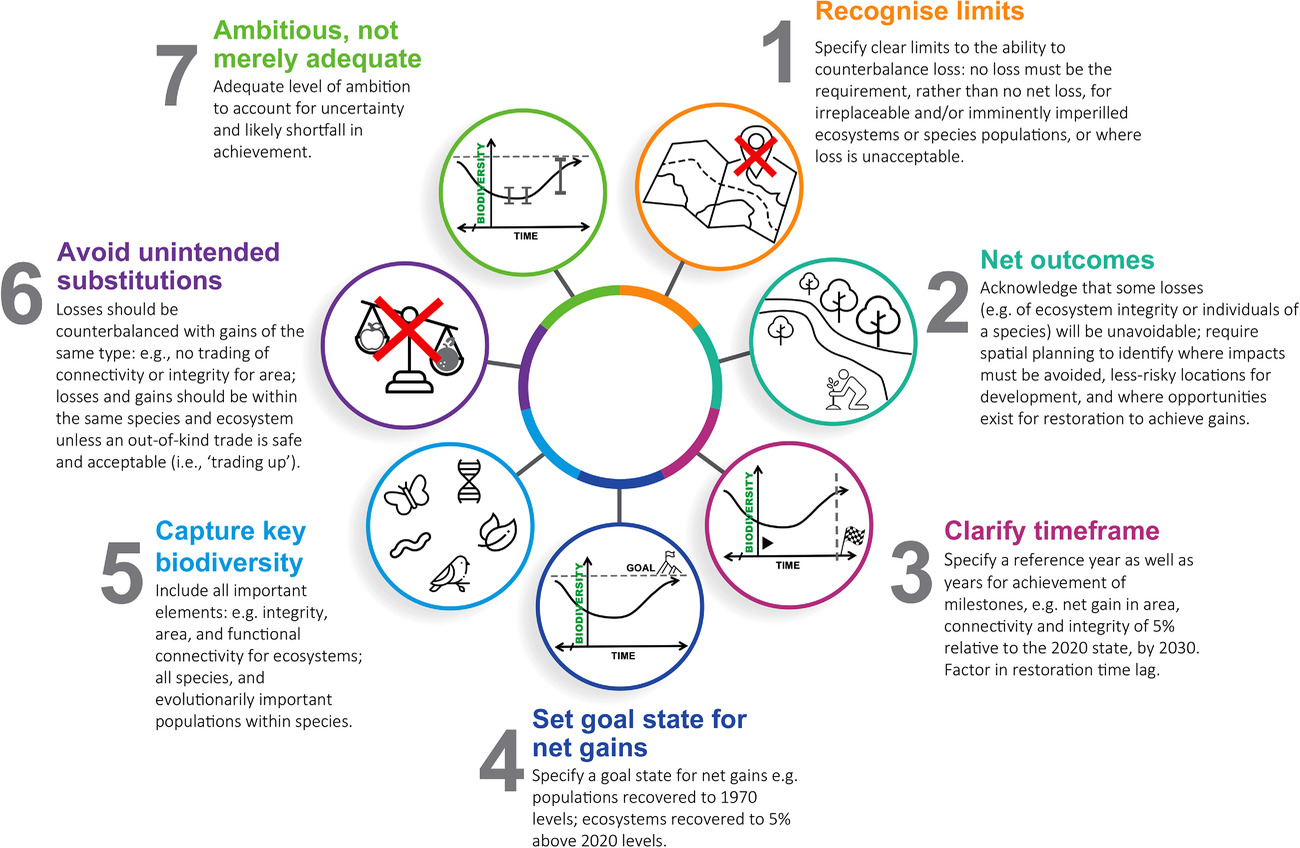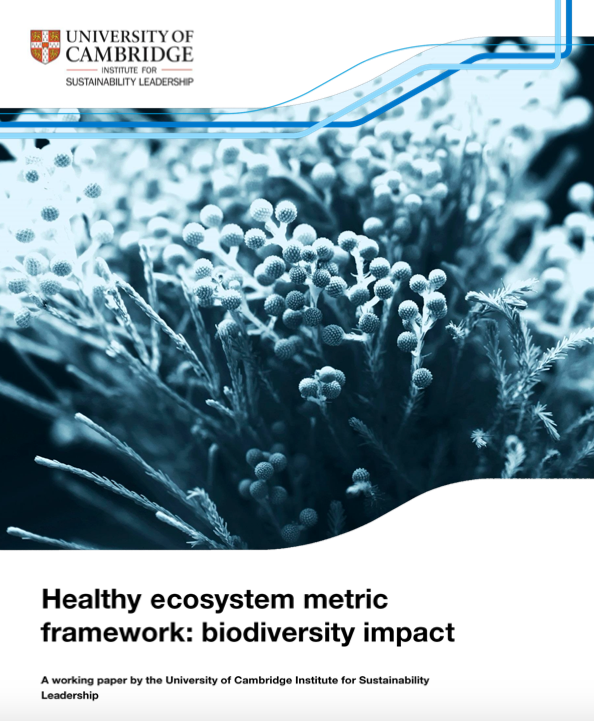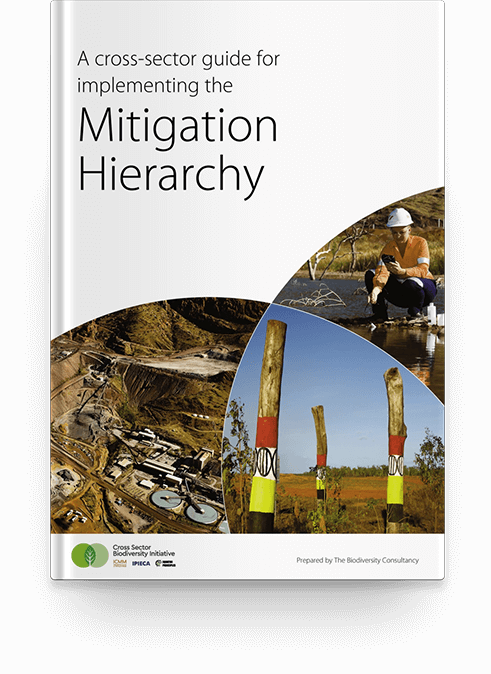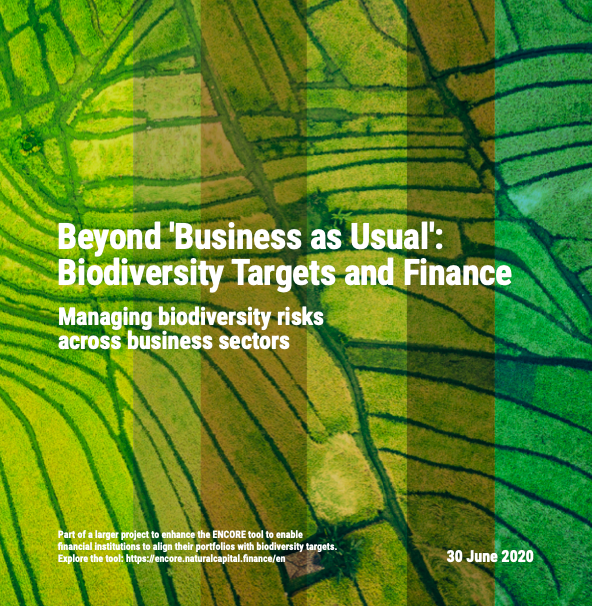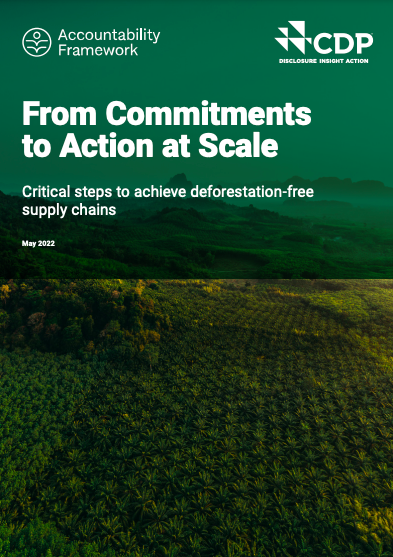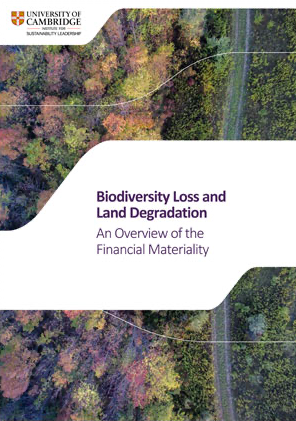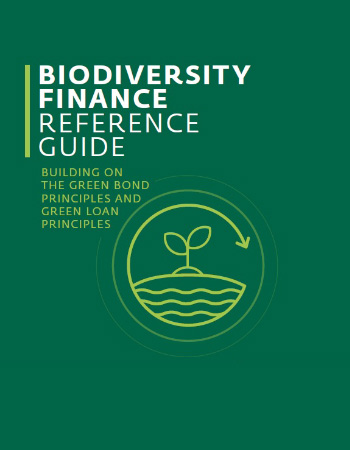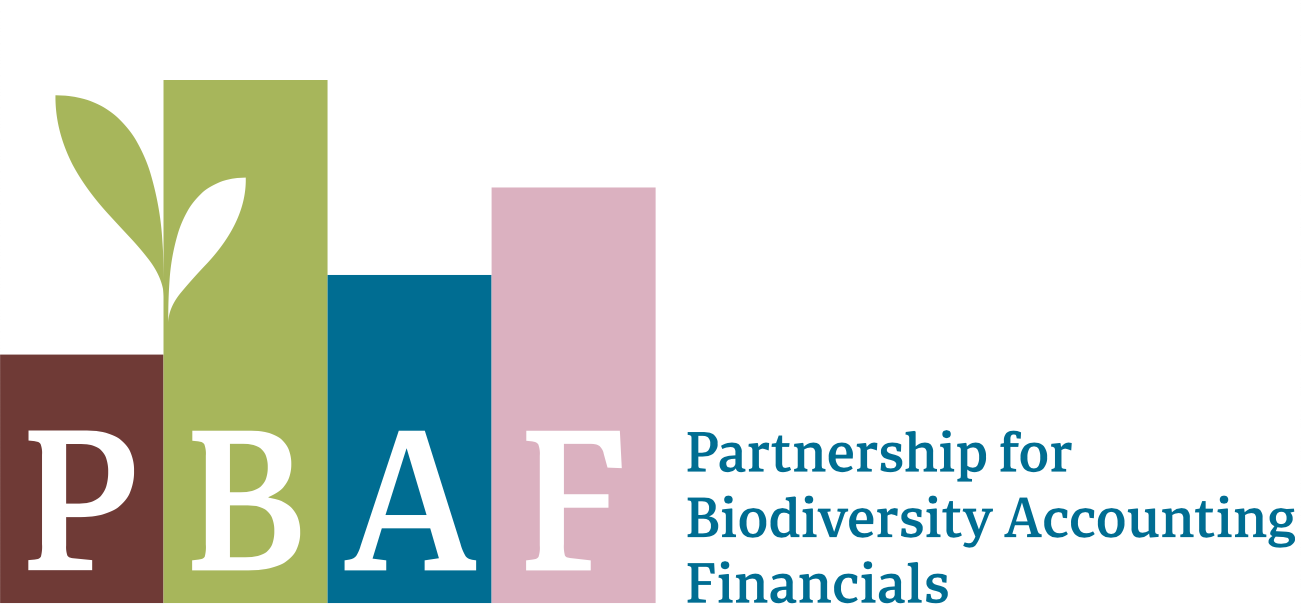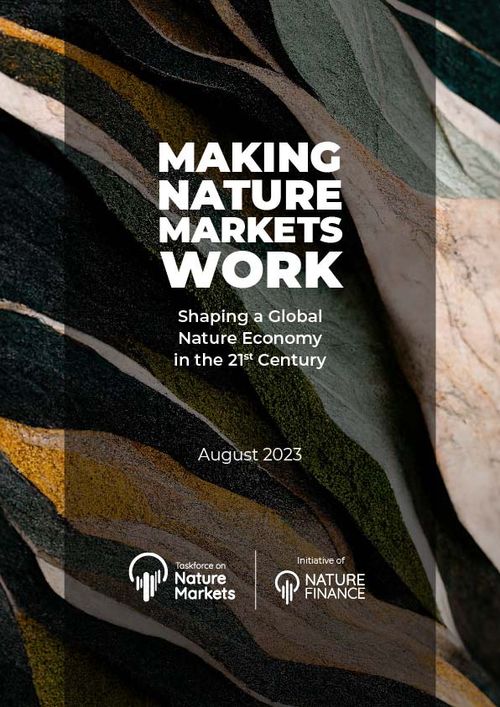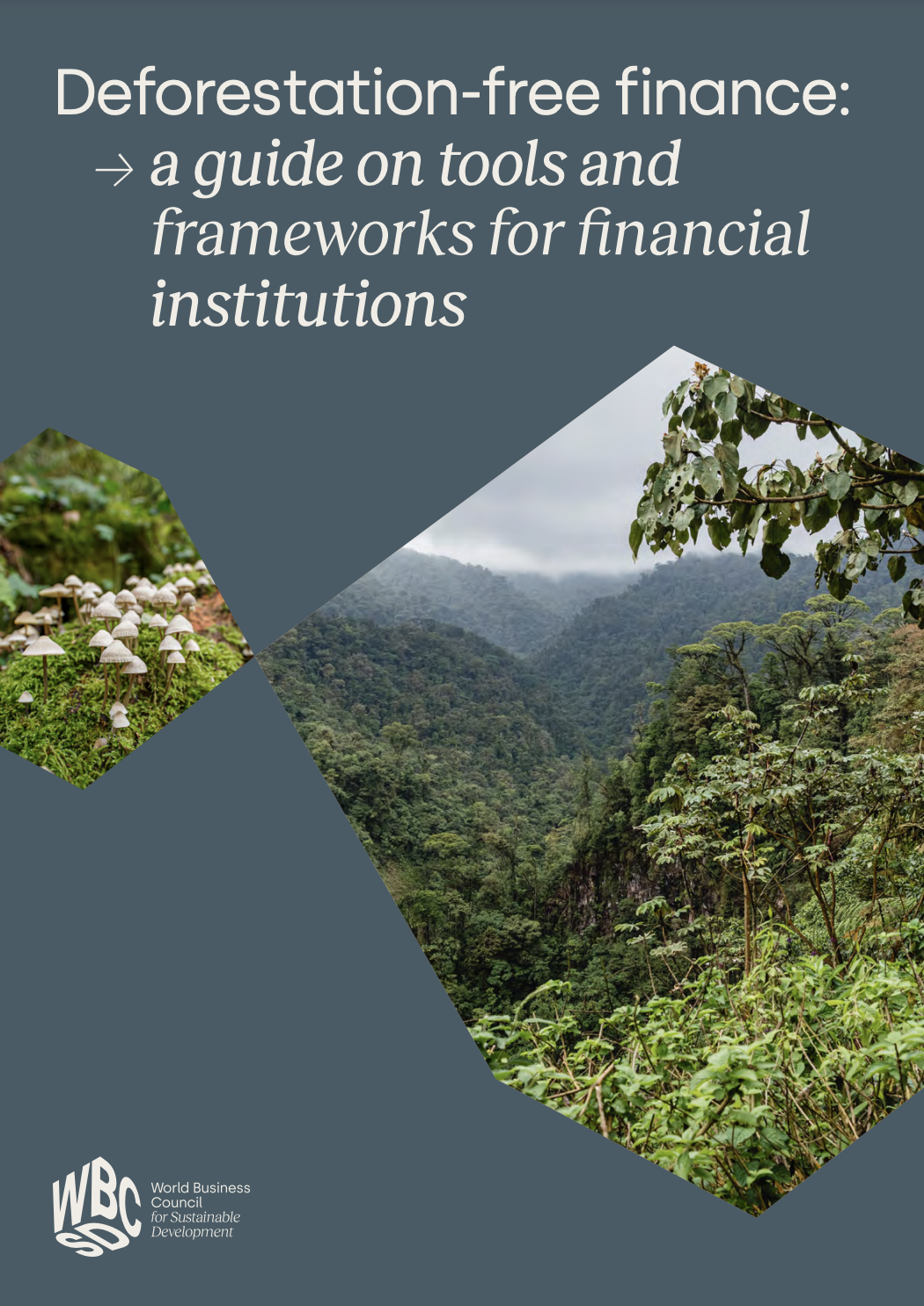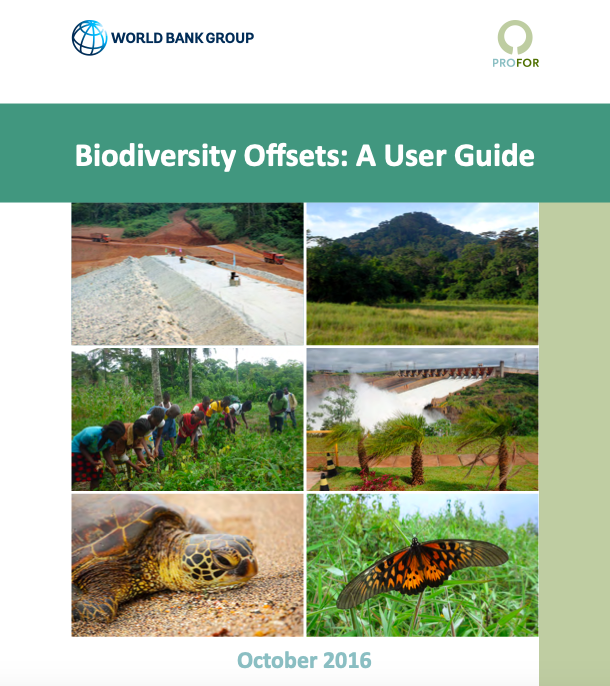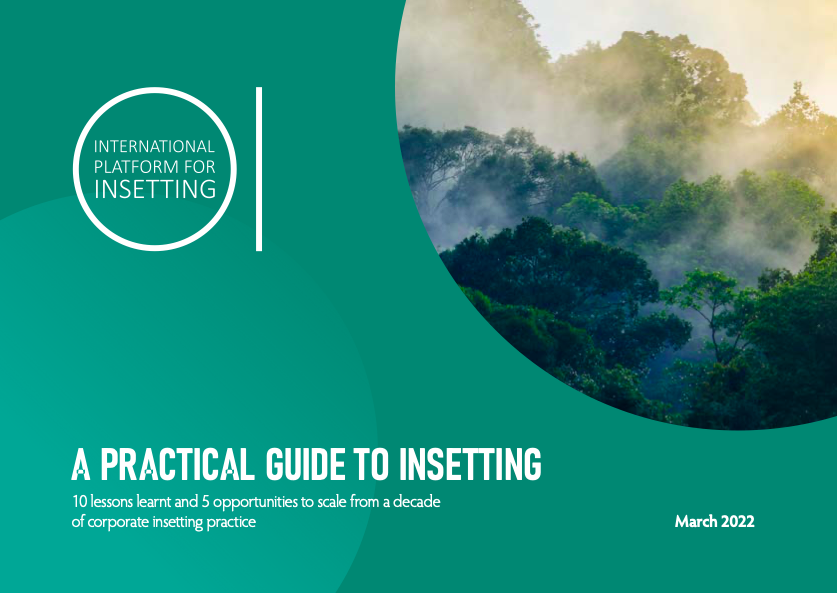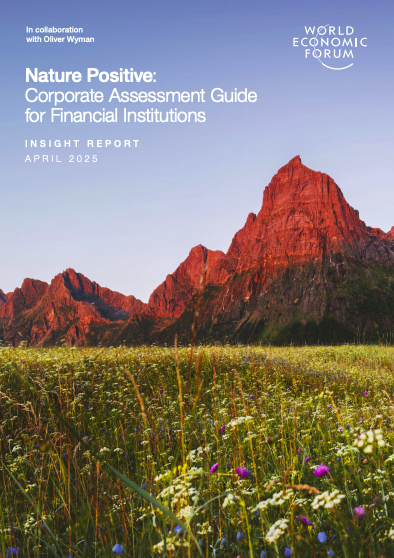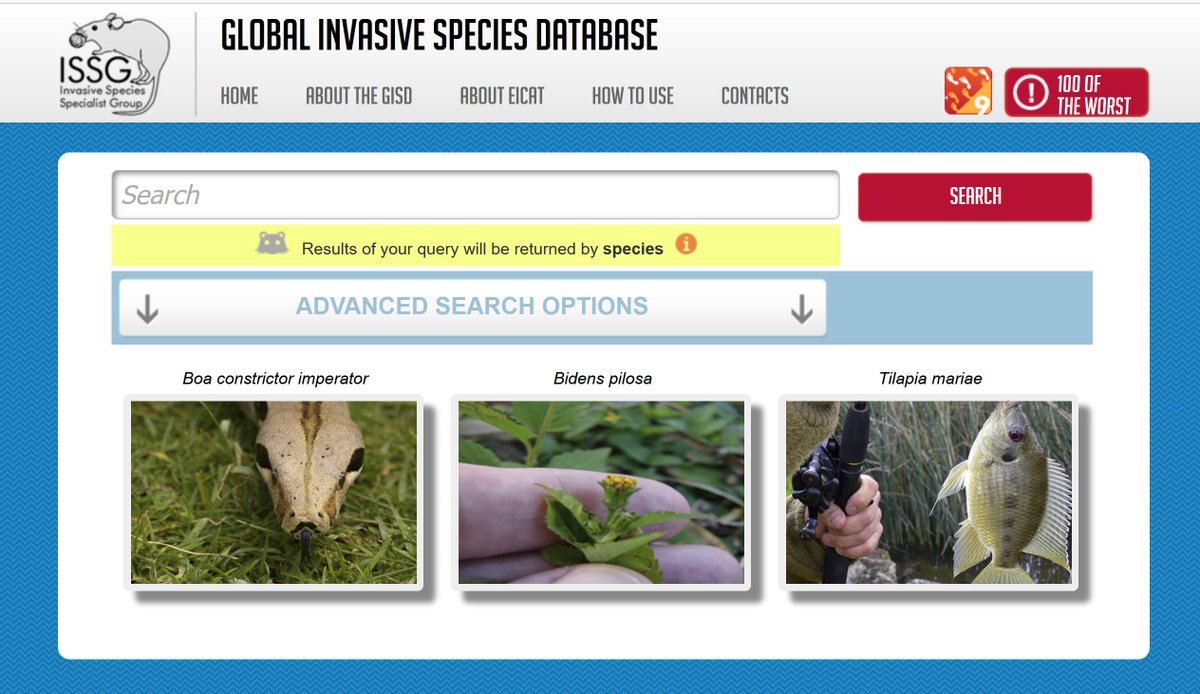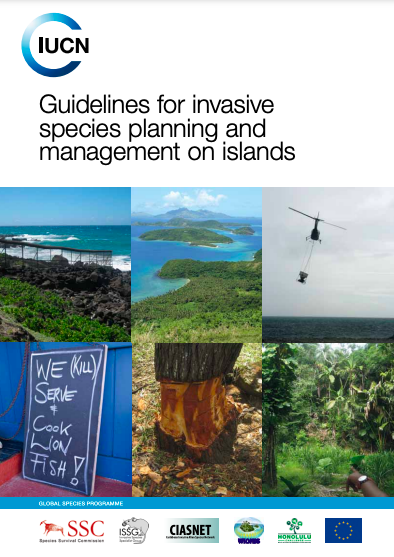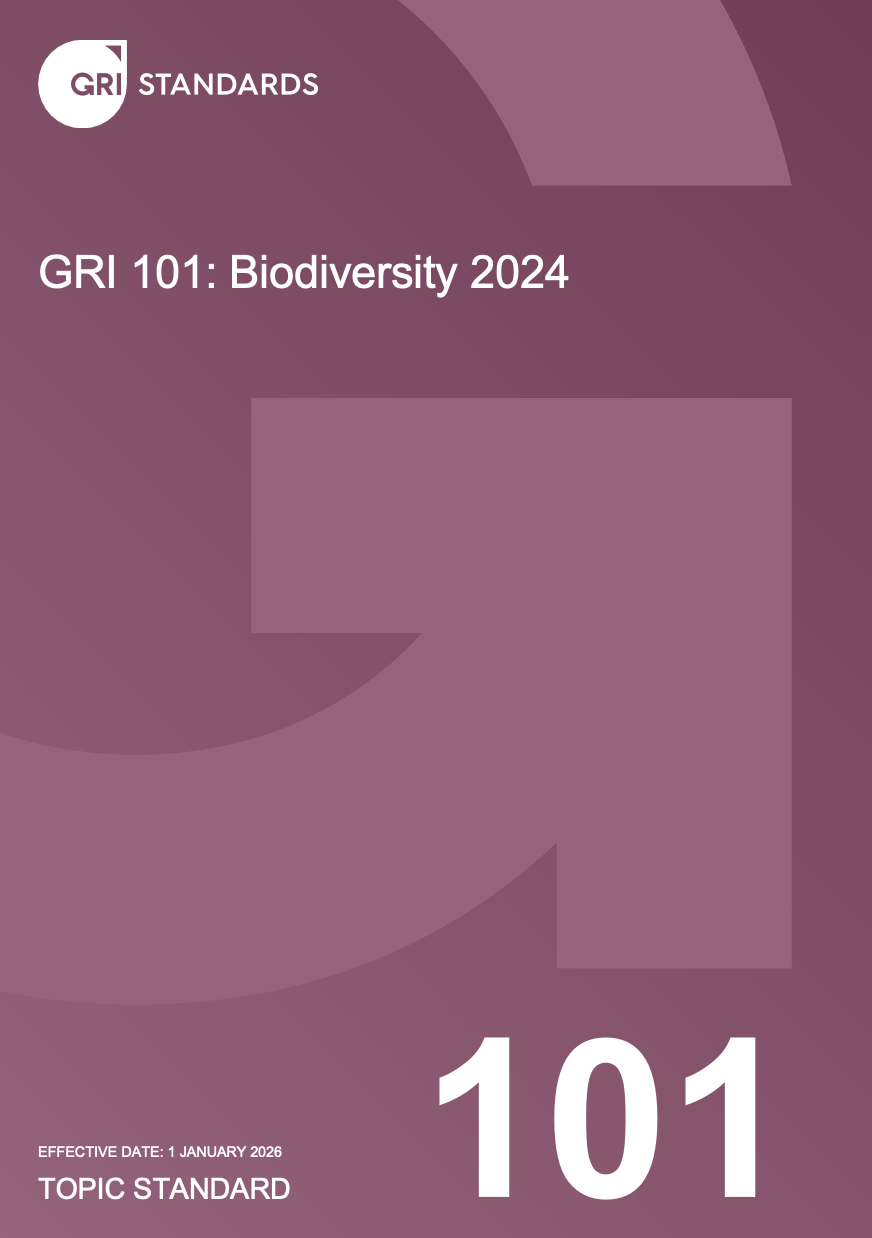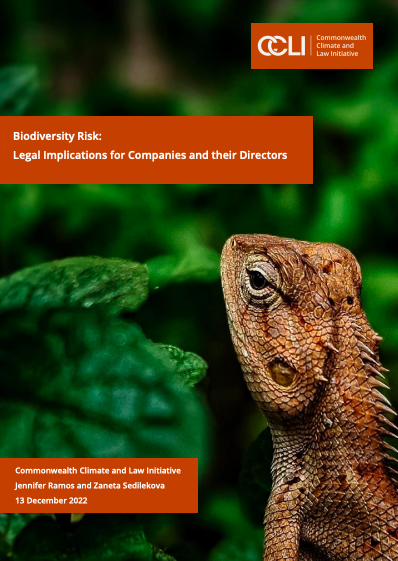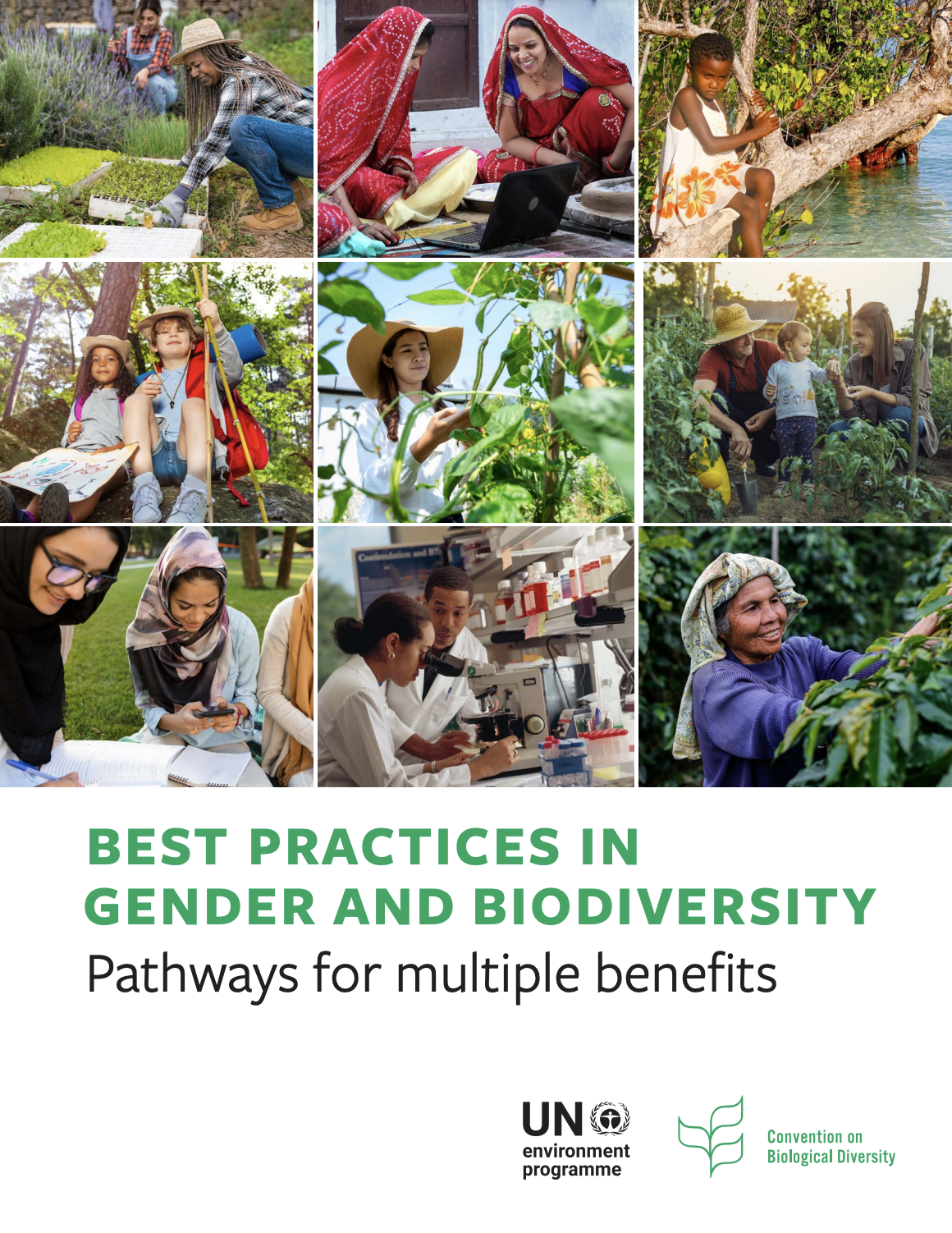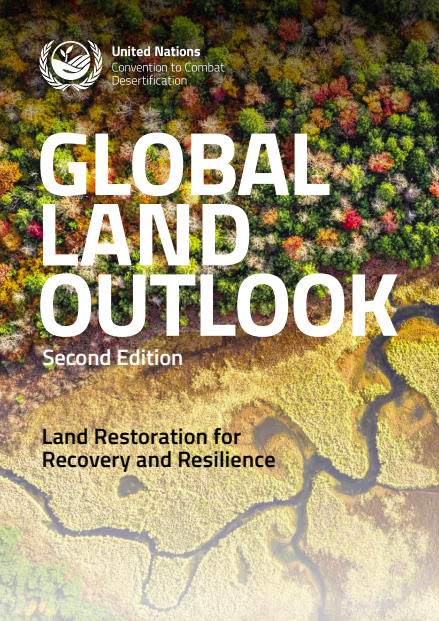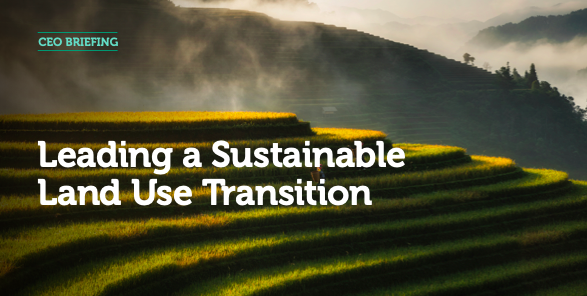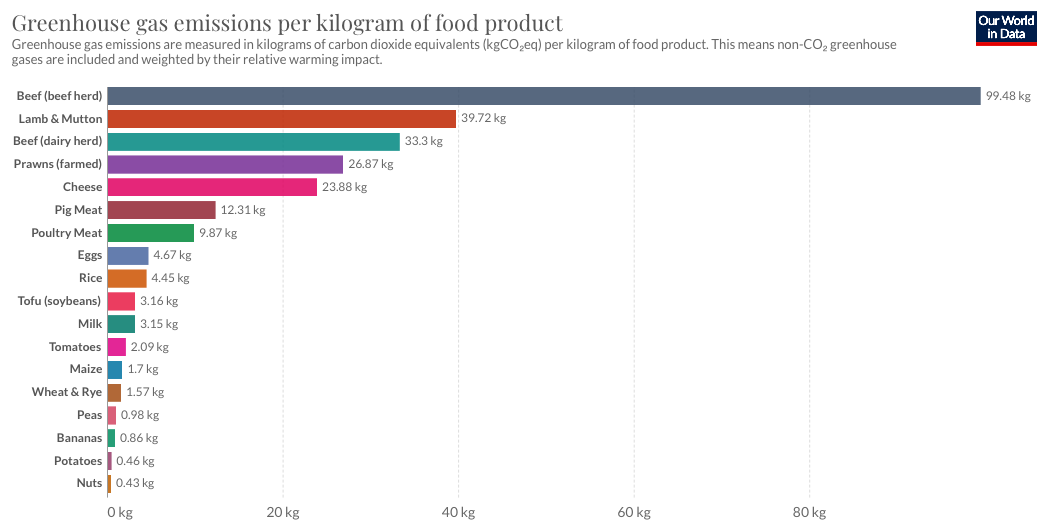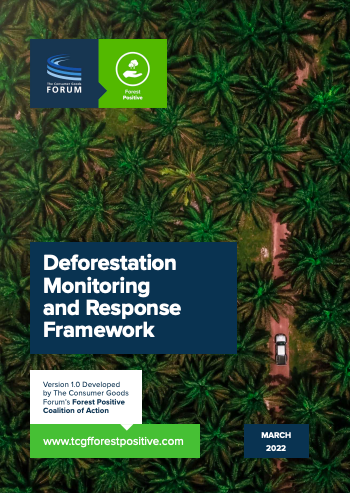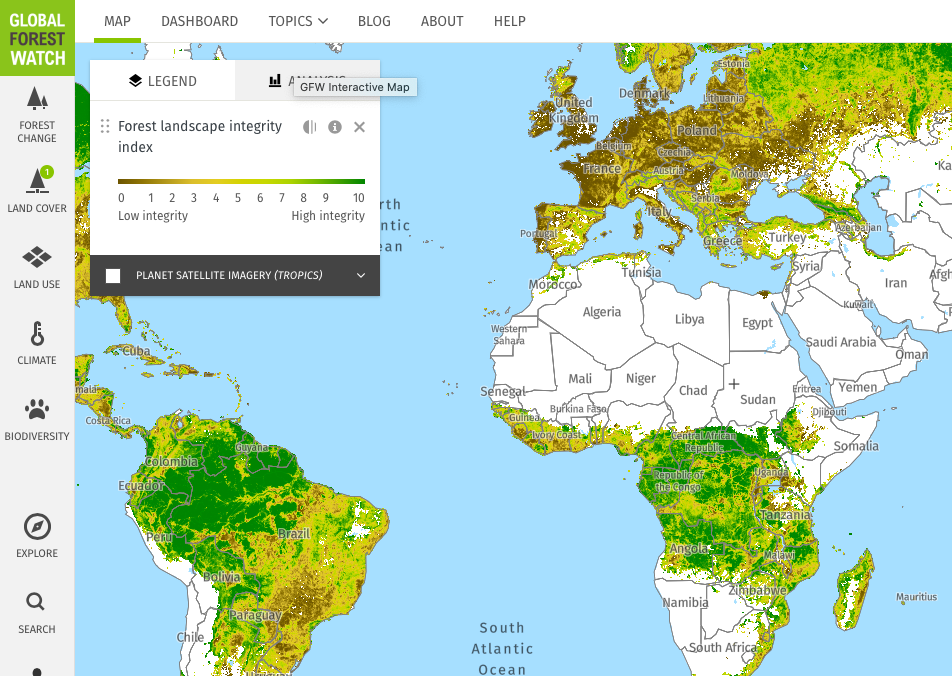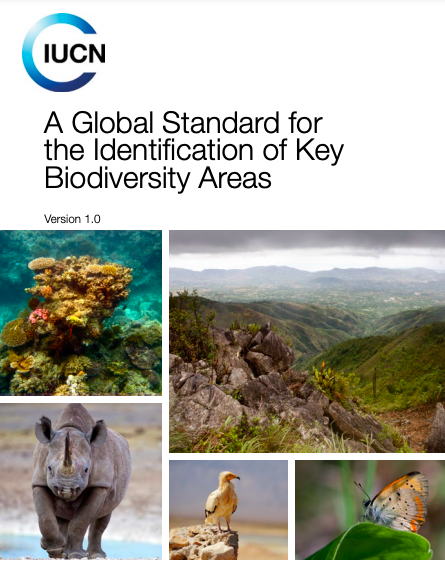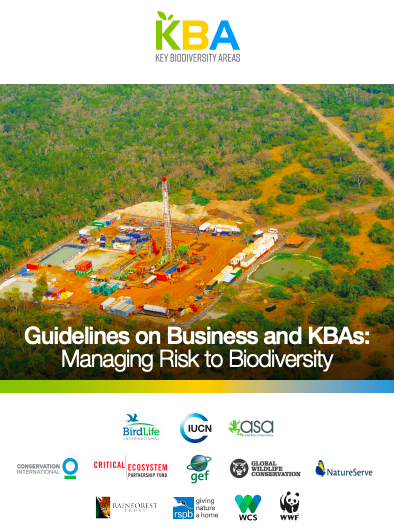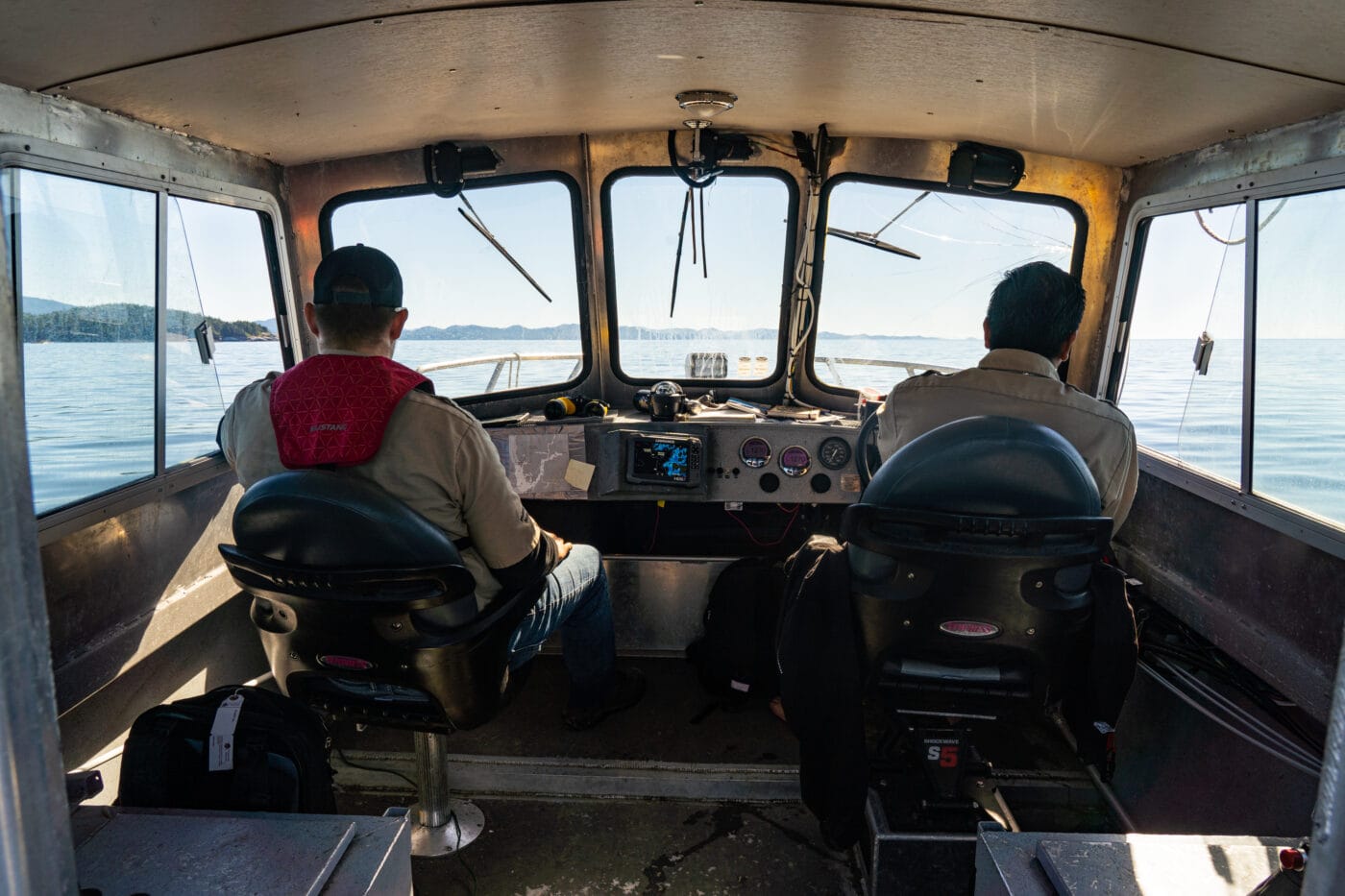Nature
Description
This includes the cumulative effects of rapid and extensive urbanisation and industrialisation as well as other human activities that threaten nature and the important ecosystems services it provides. Given the urgency of addressing nature-related loss, companies should seek to operate in ways that align with becoming ‘nature positive’ by ensuring ongoing ecosystem resilience and developing strategies to protect and restore ecosystems and the services they provide. Harm should be avoided and, when not possible, companies should do their best to minimise, offset, and compensate for any harm. Companies must also engage in restoration and/or compensation activities to address residual impacts to ensure that natural spaces are healthy and functioning when activities cease and look for opportunities to participate in improving, protecting, and restoring adjacent landscapes and other areas under threat.
Share this Issue on:LinkedIn
Resources
The Kunming-Montreal Global Biodiversity Framework
Agreed upon at the 15th meeting of the Conference of Parties to the UN Convention on Biological Diversity, this global framework sets out to preserve and restore nature, protect biodiversity, prevent extinction of species, ensure sustainable use, and promote fair and equitable benefit sharing. It contains four ambitious goals for 2050 and 23 interim targets for 2030 that depend on collaboration between industries and governments at all levels.
Intergovernmental Science-Policy Platform on Biodiversity and Ecosystem Services (IPBES)
Established in 2012, the Intergovernmental Science-Policy Platform on Biodiversity and Ecosystem Services (IPBES) is an intergovernmental organisation that was created to "strengthen the science-policy interface for biodiversity and ecosystem services for the conservation and sustainable use of biodiversity, long-term human well-being, and sustainable development." They are a knowledgeable and reputable source for content that will support your understanding of nature's contributions to human well-being.
The IPBES produces assessments on specific themes and issues at both the regional and global levels; supports policy development; builds capacity and knowledge for participating member states; provides tracking to show the impact of their knowledge materials on decision-making; and engages in communications, outreach, and awareness-building on key ecosystem-related topics.
The IPBES Global Assessment Report on Biodiversity and Ecosystem Services
This report is the first ever intergovernmental global assessment on the status and trends of the natural world; their direct and indirect causes; the social implications of these trends; and the actions that can be taken to ensure nature is conserved, restored, and used sustainably. The assessment presents a comprehensive analysis and synthesis of scientific publications, indigenous knowledge, and local knowledge to highlight the impact of biodiversity and ecosystem services on human well-being and the effectiveness of responses, including the Strategic Plan for Biodiversity and its Aichi Biodiversity Targets.
The summary for policymakers would be of particular value to directors, or to sustainability change agents for the creation of learning materials.
The Convention on Biological Diversity
The Convention for Biological Diversity (CBD) aims to provide a global framework for biodiversity action. The CBD has three main goals: conserving biodiversity, achieving the sustainable use of its components, and fairly and equitably sharing the benefits arising from genetic resources. The CBD brings together the Conference of the Parties (COP) every two years to review progress, adopt programs, and provide policy guidance. Among their achievements is the Strategic Plan for Biodiversity 2011-2020, which provided an overarching biodiversity framework for the entire UN system and all partners involved in policy development. This plan includes the Aichi Biodiversity Targets, which were established in an effort to protect and conserve the biodiversity that underpins global food security, health and clean water.
The CBD website is a rich source for learning materials on biodiversity indicators and required actions; primer guides on the Aichi Biodiversity Targets; information on national biodiversity strategies and action plans; and more.
The Nagoya Protocol on Access and Benefit-sharing
The Nagoya Protocol is an international agreement which aims at sharing the benefits arising from the use of genetic resources in a fair and equitable way. Supplementary to the Convention on Biological Diversity, it was developed to create greater legal certainty and transparency for both providers and users of genetic resources by establishing more predictable conditions for access to genetic resources, as well as helping to ensure benefit-sharing when genetic resources leave the country providing the genetic resources.
What Is The Mitigation & Conservation Hierarchy?
This framework from the Conservation Hierarchy outlines four steps (refrain, reduce, restore, and renew) that can be implemented to help businesses advance nature-positive outcomes. The steps can be implemented via two pathways: the mitigation hierarchy, for mitigating future negative impacts, and the conservation hierarchy, for delivering additional conservation potential. The framework is based on the well-established 'mitigation hierarchy' for addressing impacts on biodiversity, and moves beyond it by recognising the need to address past, indirect, and diffuse negative impacts on biodiversity and by combining impact mitigation and proactive conservation. Understanding and implementing this framework is an important starting point for any business that is committed to addressing its direct and indirect impact on nature.
The IUCN Red List Index
Established in 1964, the International Union for Conservation of Nature’s Red List of Threatened Species is the world's most comprehensive information source on the global extinction risk status of animal, fungus, and plant species. The index shows trends in overall extinction risk for species, and is used by governments to track their progress towards targets for reducing biodiversity loss. It is also used to guide scientific research, inform policy and conventions, influence resource allocation, and inform conservation planning.
IPBES Assessment Report on the Interlinkages Among Biodiversity, Water, Food and Health
Also known as the Nexus Report, this new landmark report from IPBES provides an ambitious scientific assessment of the complex interconnections between biodiversity, water, food, health, and climate change. Nexus approaches are crucial; despite the intertwined nature of the drivers and underlying causes of degradation of biodiversity, water, food, health, and climate, existing actions to address these challenges fail to tackle the complexity of interlinked problems. Decisions to address these issues are often taken in isolation, resulting in potential misalignment, unplanned trade-offs, and unintended consequences.
The product of three years of work by 165 leading international experts from 57 countries from all regions of the world, the report explores past and current nexus interactions; future nexus interactions; response options that address nexus interactions; and approaches for transforming current siloed modes of governance to better achieve just and sustainable futures. Although created for policy-makers, this summary is a good source of information for sustainability professionals - particularly for the creation of learning materials for senior leaders.
Agreement on Marine Biodiversity of Areas beyond National Jurisdiction
The United Nations agreement on biodiversity beyond national jurisdiction or BBNJ Agreement (referred to by some stakeholders as the High Seas Treaty or Global Ocean Treaty) is a legally binding agreement for the conservation and sustainable use of marine biological diversity of areas beyond national jurisdiction. Adopted in June 2023, the agreement addresses four main issues:
marine genetic resources, including the fair and equitable sharing of benefits
measures such as area-based management tools, including marine protected areas
environmental impact assessments
capacity-building and the transfer of marine technology
The Taskforce on Nature-related Financial Disclosures
Reversing global nature loss depends on a shift in global financial flows away from nature-negative outcomes and toward nature-positive outcomes. This depends on large and small businesses across supply chains, financial institutions, and industries of all types collectively identifying, assessing, managing, and disclosing nature-related dependencies, impacts, risks, and opportunities. Towards meeting this inter-industrial challenge, the Taskforce on Nature-related Financial Disclosures (TNFD) was established in 2021 in response to the growing need to factor nature into financial and business decisions.
The TNFD has developed a market-led, science-based risk management and disclosure framework for organisations to report and act on evolving nature-related risks and opportunities. The TNFD has also developed case studies and sector-specific guidance; a Knowledge Hub that features a curated collection of the latest external resources and market insights on nature-related risks and opportunities; and an open-access Learning Lab that supports self-paced learning about nature-related issues, the TNFD recommendations, and additional guidance.
IBAT Biodiversity Map
The TNFD and IBAT Alliance have collaborated to create an integrated version of the Integrated Biodiversity Assessment Tool's biodiversity map on the TNFD website. This interactive map can help you to access critical biodiversity information and can be used to quickly screen for areas of biodiversity importance using the World Database of Protected Area, the World Database on Key Biodiversity Areas, and the IUCN Red List of Threatened Species. These datasets are recommended by the TNFD for assessing biodiversity importance as part of the TNFD's LEAP approach.
IPBES Transformative Change Assessment
This new assessment report from IPBES can help you to understand the cost of delaying actions to halt and reverse biodiversity loss; the benefits of taking action now; and the actions required to support transformative change. The Assessment Report on the Underlying Causes of Biodiversity Loss and the Determinants of Transformative Change and Options for Achieving the 2050 Vision for Biodiversity – also known as the Transformative Change Report - estimates that delaying necessary action by even a decade will double the costs of acting now and explains how shifting immediately toward regenerative and nature-positive economic approaches can unlock massive opportunities for industry and innovation. The report explains why transformative change is urgent, necessary, and challenging, yet possible; explains five key strategies and associated actions for transformative change; and explores the roles that we can play to enable transformative change. This resource will be most beneficial to sustainability, risk, and strategy professionals, and especially those evaluating nature-related risks and opportunities.
The Nature of Risk
Scientific consensus is growing around risks to business from the loss and degradation of nature. This report and framework from WWF builds on existing natural capital and climate-related risk frameworks, and will help you understand the extricable link between nature- and climate change-related risks. This resource also includes a set of case studies featuring businesses facing the consequences of nature-related risk.
Climate Risk Assessment for Ecosystem-based Adaptation: A guidebook for planners and practitioners
This guide is a good starting point if your organisation is looking to preserve at-risk natural spaces from climate change impacts. The guide focuses on ecosystem-based adaptation, which involves the use of biodiversity and ecosystem services to help communities adapt to the negative effects of climate change and to reduce their risk to environmental hazards. This handbooks will help you to perform sound assessments of climate risks for social-ecological systems, and provides guidance on how to systematically consider ecosystems and their services as both a driver of risk (when function is reduced) and as an opportunity for risk reduction and adaptation. This document introduces key concepts and methodological steps relevant for ecosystem-based adaptation; identifies potential adaptation measures; and explains how to perform related planning and use risk assessments for monitoring and evaluation.
ENCORE (Exploring Natural Capital Opportunities, Risks, and Exposure)
ENCORE (Exploring Natural Capital Opportunities, Risks, and Exposure), a free tool from the Natural Capital Finance Alliance, can help you to visualise how your business may be exposed to accelerating environmental change. The tool provides a snapshot of the dependencies and impacts for a wide range of sub-industries and processes, and includes fact sheets and maps to help you understand the links between business activities and nature.
Nature Benchmark
The Nature Benchmark measures and tracks corporate performance towards a nature-positive future and ranks keystone companies on their efforts to protect biodiversity and the environment. Created by the World Benchmarking Alliance, the benchmark provides publicly available, evidence-based insights into how the world's most influential companies are contributing to the preservation and regeneration of nature. The Nature Benchmark specifically reviews the policies and practices of companies spanning a range of industries with a particularly significant impact on nature: metals and mining; food and agriculture; construction and engineering; construction materials and supplies; containers and packaging; paper and forestry products; pharma and biotech; tyres and rubber; apparel and footwear; and chemicals.
Valuing Nature: The case for nature-related assessment and disclosure
This report by the SustainAbility Institute and the Capitals Coalition builds a case for nature-related disclosure and provides a roadmap for how businesses can approach it. The report unpacks new nature frameworks; connects the Capitals Coalition’s Natural Capital Protocol with the Taskforce for Nature-related Financial Disclosure's (TNFD) beta framework; and outlines a set of nature-related actions that your company can and should take today. This is a good resource for preparing leaders and boards to make clear, consistent, and timely nature-related disclosures upon the TNFD's launch.
Roadmaps to Nature Positive
This series of roadmaps produced by WBCSD can help you understand how to credibly take action that supports nature. It consists of one foundational roadmap for all businesses, and additional roadmaps for key sectors such as agriculture, forests products, buildings, and energy. These resources are aligned with leading sustainability frameworks and can support companies in developing science-based targets for nature, reporting against the Taskforce for Nature-related Financial Disclosures (TNFD) and the EU's Corporate Sustainability Reporting Directive (CSRD), and taking priority actions in line with the Global Biodiversity Framework, which calls for stopping or reversing nature loss by 2030. This guidance will be most useful to sustainability and supply chain teams.
Nature Risk Profile
This guide from UNEP was created to support the financial sector with measuring and addressing nature-related risk. The guide outlines a methodology and provides scientifically robust and actionable sustainability analytics that can help you to assess your company's impacts and dependencies on nature.
Climate and Nature: A Route to Mutual Acceleration
This briefing sheet from the Cambridge Institute for Sustainability Leadership (CISL) can help you understand how necessary, joint action on nature and climate can be scaled up. It outlines six critical actions for business, financial institutions, and governments, addressing policymaking, finance, business strategy, behaviour change, collective resource management, and value chains. This brief will be most useful to sustainability practitioners across sectors, and especially as a primer for senior leaders.
Guidance on engagement with Indigenous Peoples, Local Communities and affected stakeholders
This comprehensive guide from the Taskforce on Nature-related Financial Disclosures (TNFD) can help ensure that your approach to nature-related issues is informed by Indigenous Peoples and local communities. It explains how to meaningfully engage with stakeholders and rightsholders affected by your operations and value chain. It outlines an engagement process that includes identifying who to engage, reviewing existing standards and regulations, mapping relevant stakeholders, understanding modes and principles of good engagement, and monitoring. This detailed guidance also helps you to align with TNFD disclosure standards. It will be most useful to sustainability and community relations teams.
Handbook for Nature-related Financial Risks: Key concepts and a framework for identification
This handbook from the University of Cambridge Institutite for Sustainability Leadership (CISL) explains how nature loss is a risk to financial institutions. Created to help financial practitioners with limited prior knowledge of biodiversity loss, land degradation, and other ecosystem-related sustainability topics, it provides an overview of key terms and concepts and features a framework for identifying various nature-related financial risks (as well as relevant physical, transition, and liability risks). This is a good starting point for practitioners who want to better understand how to embed nature-related financial risks into strategy and decision-making.
Nature Strategy Handbook: A practical guide for business
This concise and practical guidebook from It’s Now for Nature can help you develop and publish a nature strategy that contributes to the health and resilience of the natural world. The guide is structured in line with ACT-D High-Level Business Actions on Nature (Assess, Commit, Transform and Disclose). For each of these actions there are guiding questions, recommendations, and resources to enable development of a nature for strategy. This resource will be most useful to sustainability practitioners seeking to reduce their organisation’s negative impacts on nature while boosting resilience and long-term businesses value.
Nature and Climate Action: A Resource Navigator for Companies and Financial Institutions
This comprehensive resource created by the Global Commons Alliance, the Climate Champions Team, and AccountAbility can help you navigate the resource landscape for business action on nature and climate. Section 4 maps out global frameworks, standards, methodologies, and decision-making tools, and section 6 provides a step-by-step pathway to learning and features resource tables that align with the target-setting frameworks of the SBTN and SBTi. Sections 7 and 8 then provide in-depth summaries of key resources. This resource will be especially useful to professionals seeking clarity on the use of both new and well-established sustainability tools and frameworks.
Accountability for Nature: Comparison of Nature-Related Assessment and Disclosure Frameworks and Standards
This report from UNEP can help you understand the evolving landscape of nature-related disclosure frameworks and assessments. It compares the approaches of major frameworks, such as CDP, ESRS, GRI, ISSB, SBTN, and the TNFD, highlighting common trends and identifying the ways in which they differ. The authors plan future research as continued changes are expected, such as the transition from voluntary to mandatory disclosure requirements. This resource will be especially useful to sustainability practitioners and legal teams.
A Guidebook for Business on Nature
This guidebook from the World Resource Institute provides a simple and actionable framework that can help you to integrate nature into decision-making. Based on a literature review and input from 41 corporate actors and grounded in real-world insights and case studies, the guide introduces the SPARK framework (and its abridged variant, the ARK framework). The SPARK framework consists of three essential steps (A, R, K) for action on nature and two optional preliminary steps (S and P) that can help companies to determine materiality. The SPARK framework recommends that users Start by identifying risks and opportunities; Prioritise significance; Assess support and action for nature; Refine operational mechanisms; and Kick off and evaluate. The guide features key questions to consider for each step; highlights case studies of companies that have successfully implemented nature-related initiatives; and identifies internal and external enablers for action and potential barriers to action. This guidebook will be particularly beneficial to corporate decision-makers tasked with translating nature-related commitments into action, including executives and cross-functional teams in strategy, finance, risk, and operations.
Asking Better Questions on Nature – For board directors
This guide was created to help board directors inform their nature-relation decision making by surfacing critical insights about nature-related dependencies, impacts, risks, and opportunities. Created by the TNFD in collaboration with Chapter Zero, Competent Boards, the Commonwealth Climate and Law Initiative, and the Green Finance Institute, the guide features twelve questions related to nature's relevance to your business; integrating nature into decision making; understanding the external context; organisational competence on nature-related issues; and board reflection. These questions have been identified based on discussions with experienced executive and non-executive board directors of leading organisations that are already considering climate- and nature-related issues.
The Little Book of Investing in Nature
Contrary to its modest name, this comprehensive resource from Global Canopy can help you to better understand the range of options available for financing nature conservation. The book introduces an overarching framework that organises biodiversity financing mechanisms into five categories: revenue generation, better delivery, expenditure realignment, avoidance of future expenditures, and catalysts. The book uses a set of common criteria that are presented graphically with icons so as to facilitate comparison of the various available financing options within each category. This resource will be especially beneficial to sustainability and finance teams.
Nature's Price Tag: The economic cost of nature loss
This report from Ceres can help you to better understand the economic implications of nature loss. It quantifies the cost of nature loss by driver (including land and sea use change, the overexploitation of natural resources, climate change, pollution, and the spread of invasive species) and relevant ecosystem services for eight unique sectors: biotechnology and pharmaceuticals, chemicals, consumer goods retail, food and beverage retail, food production, forestry and packaging, household and personal goods, and metals and mining. It provides risk profiles for each sector, defining priority areas for nature action based on potential economic losses tied to ecosystem service dependencies. It also provides an engagement framework around four areas of company action: assessing impacts and dependencies; making commitments and setting targets; transforming the value chain; and creating an enabling environment. For each area, the report lists indicators that investors can look for to assess corporate progress. This framework will be particularly beneficial to financial institutions and finance professionals that want to better understand and engage portfolio companies on nature-related risks.
ISO 17298: Biodiversity for organizations – Guidelines and Requirements
This ISO standard provides a practical, scalable framework that can help your organisation to assess its biodiversity impacts, dependencies, risks, and opportunities and take measurable, accountable action to protect and restore biodiversity. It offers a structured roadmap that enables organisations to assess biodiversity-related impacts and consider these effectively in their strategies. It embeds biodiversity into core governance and risk management practices, better ensuring alignment with global expectations and organisational operations. This standard is designed to be interoperable with other widely used initiatives, such as ISO 14001, ISO 26000, TNFD, and the Sustainable Development Goals (SDGs), and contributes directly to the Kunming-Montreal Global Biodiversity Framework.
Natural Capital: The Next Evolution of Environmental Reporting
This paper from ISS Governance can help you to better understand the state of play regarding natural capital reporting and developments in the proxy voting space. It highlights the evolution of reporting frameworks and their common themes; provides stakeholder groups mapping; and features analyses of natural capital-related shareholder proposals, including those related to agricultural impacts, chemical pollution, deforestation, extractive impacts, lobbying, plastic pollution, and water-related risks. This resource will be especially helpful for change agents supporting sustainability-related disclosures, senior leaders, and investor engagement professionals.
Returns on Resilience: Investing in Adaptation to Drive Prosperity, Growth and Competitiveness
This report, co-published between Systemiq and twenty other organisations, can help you to understand the scale and scope of society-wide benefits from investing in climate and nature resilience. The report presents strong evidence that adaptation is not just a moral imperative, but rather a strategic investment in sustainable growth. It makes the case for investments in resilience, unpacks the resilience investment agenda, and identifies priority actions for economic and financial decision-makers. It also identifies fifteen high impact, cost-effective solutions that generate strong socioeconomic returns and are critical for enhancing resilience and delivering key development outcomes, including crop resilience, heat mitigation, water collection and storage, digital public infrastructure, and more.
Nature Action Portal
Co-created with 100+ leading companies, this resource from WBCSD can help you to start - or accelerate - your journey toward nature positive. It provides a four-step process to help you learn the foundations of nature as a business imperative, including drivers of nature loss, key risks and opportunities, and more; build a clear understanding of how your sector interacts with nature by exploring the most material dependencies, impacts, risks, and opportunities across your operations and supply chain; identify and select the actions that will have the greatest impact in halting and reversing nature loss within your company’s operations and supply chain; and navigate and select the most relevant and feasible metrics to measure and disclose progress on your chosen actions.
Nature Positive Transitions: Sectors
This report series from the World Economic Forum explores transformative pathways to halt and reverse nature loss by 2030. Grounded in the Kunming-Montreal Global Biodiversity Framework, the series focuses on critical sectors, such as chemicals, cement and concrete, mining and metals, and ports. It highlights the impacts and dependencies of these sectors on nature, as well as priority actions businesses can take to avoid and reduce negative impacts, mitigate nature-related risks, build resilience, and unlock opportunities across value chains. Each report identifies sector-specific material impacts on nature, such as pollution, land-use change and resource use, and offers actionable recommendations to align business practices with global biodiversity and climate goals.
Breaching planetary boundaries: Over half of global land area suffers critical losses in functional biosphere integrity
This study from the Potsdam Institute for Climate Impact Research and BOKU University can help you to understand how different regions of the world are moving beyond "functional biosphere integrity" - the ability of plants to help regulate the planet's life-support systems. In order to uphold functional biosphere integrity, plants must acquire enough energy through photosynthesis to maintain the material flows of carbon, water, and nitrogen that support ecosystems and their processes. Unfortunately, intersecting crises such as climate change, nature loss, and land cover conversion are eroding this capacity. The study finds that 60% of global land areas already exist outside the locally defined safe zone, and 38% are now in high-risk zones.
The study builds on the Planetary Boundaries framework published in 2023, which puts energy flows from photosynthesis at the center of those processes that co-regulate planetary stability. The study finds that stress from human activities on the Earth system can be measured by the proportion of natural biomass productivity that humanity is channeling into its own uses – through harvested crops, residues, and timber, as well as the reduction in photosynthetic activity caused by land cultivation and land sealing. The study added to this measure a second and strong indicator of biosphere integrity: complex structural changes in vegetation and in the biosphere’s water, carbon, and nitrogen balances.
Strengthening Synergies: How action to achieve post-2020 global biodiversity conservation targets can contribute to mitigating climate change
Climate change and biodiversity decline are fundamentally connected, and therefore addressing these intersecting crises will require the development and deployment of nature-based solutions. This primer will help you to understand the role that achieving biodiversity conservation targets can play in reducing emissions to meet the objectives of the Paris Agreement. The report looks at the carbon stocks associated with areas identified as possible priorities to meet proposed global biodiversity conservation targets.
Nature Map Explorer
Using the best available scientific data, Nature Map Explorer provides a set of integrated global maps on biodiversity and ecosystems services that will help you to explore, visualise, and understand the geographic context of various ecosystem services and the impacts of human activities on them. The map features layers such as terrestrial habitat types, human impact on forests, species richness, and areas of global significance for conservation, and can support your efforts to design and implement policies and initiatives aimed at limiting biodiversity loss and reducing greenhouse gas emissions.
The Vitality of Forests: Illustrating the Evidence Connecting Forests and Human Health
This resource from WWF can help you to understand how forests and human health influence each other, and well as how conservation, protection, and restoration of the world’s forests is crucial to safeguarding and promoting human health and managing climate change and biodiversity loss. Synthesising key research, the report explores five categories of potential interactions between forests and human health: noncommunicable diseases like cancer and diabetes, environmental exposure, food and nutrition, physical hazards, and infectious diseases. It also identifies major information gaps and highlights paths for environmental and health sectors to collaborate.
This report does a great job of explaining the importance of forests beyond their recreational, carbon sequestration, and biodiversity conservation potential, and will be of benefit to any professionals in sustainability, community relations, procurement, resource management, and beyond who are working to address deforestation.
IUCN Global Standard for Nature-based Solutions (1st edition)
This global standard for nature-based solutions (NbS) is a hands-on tool that can help you deploy NbS in a consistent and credible manner. The standard consists of eight criteria and 28 indicators designed to create a common understanding of best practices for tracking, measuring, and verifying NbS. For each criterion there is guidance and a case study. This resource will be most useful to those involved in planning, investing in, and supporting large- and small-scale interventions, such as sustainability, finance, strategy, and R&D departments.
Building business cases for Nature-based Solutions
This pair of resources from WBCSD can help you understand and present the business case for investing in Nature-based Solutions (NbS). The NbS Blueprint is a detailed guide that outlines a six-stage process for developing your own NbS business case: 1) identify business challenges; 2) explore relevant NbS; 3) understand the full range of value NbS offers; 4) develop the NbS design and implementation plan; 5) estimate costs of the proposed NbS; 6) and compare NbS against other solutions using multi-criteria decision analysis. It also provides eight case studies that further illustrate how other companies have developed their business cases for NbS. The Solutions Map is a tool designed to complement stage 2 of the NbS Blueprint. It helps explore relevant solutions by categorising NbS based on the business challenge they address and the biomes where they are applicable. These practical tools will be most useful to sustainability, finance, and strategy teams.
Nature-based Solutions for corporate climate targets
This guide by the IUCN can help you understand what Nature-based Solutions (NbS) are and how they contribute to net zero and nature positive goals. It has three sections that cover the role of NbS in climate change mitigation, corporate climate strategies, and achieving societal net zero. It is also features illustrative graphics. This guide will be most useful as an overview or introduction to NbS for sustainability professionals and others.
State of Finance for Nature 2023
This annual report from the UN Environment Programme can help you understand the scale of financing needed to tackle climate, biodiversity, and land degradation-related challenges. It makes the case for large-scale investment in Nature-based Solutions (NbS), examines the current scale of financial flows driving negative impacts on nature, and examines the state of financial flows driving positive impacts through NbS. It also provides estimates on the extent of NbS financing required to reach key Rio Convention targets, such as limiting the rise in climate change to 1.5° C, protecting 30% of land and sea by 2030, and reaching land degradation neutrality by 2030. The report concludes with key findings and recommendations for green financing. These insights will be most useful to the sustainability, finance, and strategy teams.
Wildlife's contributions to people
This new research can help you to better understand, explain, and represent the contributions of wildlife to people. The research explores wildlife’s role in nature's contributions to people (NCP), and - using existing evidence to map wildlife contributions onto the conceptual framework of NCP - it finds that wildlife directly supports 12 of 18 NCP categories. This resource will be beneficial to those working to embed and/or communicate the importance of wildlife and nature to upholding the resilience of people and societies.
Protecting and Restoring Nature: A Getting Started Guide
The wellbeing of society and business is dependent on nature. Anchored in research, this guide aims to support your company as it begins or revisits a nature and biodiversity strategy. It helps build a foundational understanding of the issue and provides clarity on the work ahead.
The Economics of Biodiversity: The Dasgupta Review
This global review on the economics of biodiversity calls for changes in how we think, act, and measure economic success in order to protect and enhance our prosperity and the natural world. The review thoroughly explains the foundation of the biodiversity crisis, and includes key recommendations for reversing the human-caused decline in biodiversity, such as expanding and improvement of protected areas; increased investment into nature-based solutions; the creation or improvement of policies to eliminate damaging consumption of natural assets; the incorporation of natural capital accounting; and proper valuation of ecosystem services into all national accounting systems. This comprehensive deep-dive is a key reference point for sustainability professionals that want to account for nature in decision-making.
Living Planet Index
The WWF's Living Planet Index (LPI) is a measure of the state of the world's biological diversity based on population trends within the animal kingdom. Adopted by the Convention of Biological Diversity (CBD), this resource provides data a variety of sources for thousands of species. Whether you are evaluating current or future potential strategic risks from biodiversity decline, or simply seeking to build your understanding of the state of biodiversity, this resource is a good starting point to build your knowledge of systemic pressures and threats to biodiversity, socioecological trends, and other insights on how "conservation intervention" can promote species recovery.
WWF also publishes a biennial Living Planet Report, which provides a comprehensive assessment of the health of the planet. The report measures the average change in population sizes of more than 5,000 vertebrate species, and the latest updates suggests a decline of 73% between 1970 and 2020. It also features comprehensive information on measuring nature's decline; tipping points; global goals and progress; and sustainable solutions, such as those related to nature conservation, green finance, and changes to our food and energy systems.
A Simple and Visual Definition of Biodiversity
This article written by the Network for Business Sustainability explains the three levels of biodiversity (genetic, species, and ecosystems) in simple terms, and illustrates the importance of biodiversity with a coral reef ecosystem case study. This explainer will be most useful to business leaders and to anyone interested in clarifying basic nature concepts.
Biodiversity Risk Filter
Joining the Water Risk Filter in WWF's Risk Filter Suite, the Biodiversity Risk Filter was created to help you understand, explore, assess, and respond to biodiversity risks across your operations, value chains, and investments. This free tool uses 50 annually-updated data layers that collectively provide a global, holistic picture of biodiversity-related risk. This includes information on species and ecosystems, protected areas, and the most important pressures on biodiversity such as deforestation, habitat destruction, pollution, and land use change.
A Biodiversity Guide for Business
This report from WWF can help you to identify, assess, and address biodiversity risks and opportunities that come from conserving, using, and restoring biodiversity in a sustainable way. It highlights the impact that industries such as agriculture, extractives, land development, and energy production have on biodiversity, as well as their dependencies on robust and resilient biodiversity and ecosystems. The guide also provides a biodiversity stewardship approach to help you get started.
Business for Nature
Business for Nature is a global coalition that brings together businesses and conservation organisations to advance corporate actions and government policies that reverse nature loss. They have outlined four high-level business actions that your business can take to signal that it is making meaningful contributions to creating a nature-positive world. They also provide case studies; resources to support nature-related advocacy and communications; and summaries of new and relevant frameworks, conventions, agreements, and more. Business for Nature is a good starting point for leaders and sustainability professionals who want to better acquaint themselves with nature-related policy trends, corporate actions, and talking points.
Nature in the balance: What companies can do to restore natural capital
This resource can help you to better understand the scope and scale of actions that corporations must take to protect, manage, and restore nature, thereby preserving Earth as a "safe operating space for humanity." The report outlines the case for a nature-positive approach to business; outlines the actions required to live within the planetary boundaries, and the outcomes it would achieve; and identifies key opportunities that specific industries must seize to reduce their impacts on nature. It also provides a four-step roadmap for action, including credible investments, initiatives, and innovations that companies can pursue to achieve nature-positive commitments.
Global biodiversity is in crisis, but how bad is it? It’s complicated
This article is a good primer on the pace and severity of biodiversity decline and the impacts this decline is having on our world. The article explains the concept of a global threshold for biodiversity loss; the concept and importance of genetic diversity; the realities of regime shifts; and the importance of radical action to preserve the remaining integrity of our biosphere.
Nature for boards: A primer
This resource from Pollination - in collaboration with Chapter Zero and Korn Ferry - provides a good summary of key nature topics and practical guidance that can help you to support environmental resilience. Created for non-executive directors and board members, this guide explains what future-facing governance and leadership look like in the context of nature-related risks and opportunities; nature fundamentals for businesses; directors' duties and nature risk; understanding nature-related opportunities; and the steps directors should be taking now.
Taking a Credible Position on Nature
There is growing pressure on companies to publicly acknowledge the unprecedented nature loss we face, and what they plan to do to address it. To help them do so, we reviewed over 1,000 statements on nature loss, biodiversity, and ecosystem stewardship from a wide range of geographies and industries, and identified examples of how companies are explaining the issue of nature loss, linking the issue of nature loss to their strategy, and clarifying their commitments to protect and restore nature. We hope this guide is helpful to you in articulating your own credible position statement on protecting and restoring nature.
Science Based Targets
Building on the momentum of the Science Based Targets initiative (SBTi), the Science Based Targets Network (SBTN) is a collaboration of 45+ global non-profits and mission-driven organizations working together to develop guidance to set science-based targets for all of Earth’s systems. Science Based Targets has created a five-step target-setting framework that helps you to assess; interpret and prioritise; measure, set, and disclose; act upon; and track your science-based goals. They have also created sector-specific guidance and target monitoring for companies and financial institutions.
At present, Science Based Targets helps companies to develop their goals based on the latest science: SBTi specifically focuses on GHG emission reduction goals, and SBTN specifically focuses on nature positive goals, with target-setting guidance for land, biodiversity, and freshwater. Their respective websites provide comprehensive resources, cases, and support for taking credible action.
Guidelines for planning and monitoring corporate biodiversity performance
These practical guidelines from the IUCN can help business of all types develop strategic plans to manage their biodiversity impacts. It uses a four stage approach, including understanding your companies impacts; developing your strategy and goals; identifying a set of meaningful biodiversity indicators; and creating a plan to monitor performance. This is a good resource for sustainability teams, managers, and other professionals whose responsibilities include strategic planning and biodiversity-related reporting.
Setting robust biodiversity goals
The global biodiversity framework (GBF) that is being developed under the Convention on Biological Diversity intends to ensure that by 2050 humanity is 'living in harmony with nature'. However, the authors of this paper argue that the draft goals and targets - as they are currently articulated - do not specify explicit, measurable goals that can credibly achieve this outcome. This paper makes the case for distinct outcome goals for species, ecosystems, and genetic diversity, and it outlines seven general principles to underpin smart and effective net outcome goal-setting. These principles can help you to better understand the benefits and shortcomings of broad "net outcome" goals (such as "no net loss") and can support your process for creating and implementing credible biodiversity goals.
Healthy ecosystem metric framework: biodiversity impact
A growing number of companies have expressed the need for clear, standardised 'healthy ecosystem' metrics to demonstrate their progress towards reducing their impact on nature. To help business leaders and sustainability change agents take action on ecosystem decline, the Cambridge Institute for Sustainability Learning has developed a framework that provides a credible, science-based starting point for measuring ecosystem impacts from a contextual perspective. The metric provided is based on the impact of a company upon the quality and quantity of biodiversity, soil, and water, with clear information on how the metric was conceived and how it could be used.
A Cross-Sector Guide for Implementing the Mitigation Hierarchy
This guide from the Cross Sector Biodiversity Initiative and The Biodiversity Consultancy clearly defines the four steps of the mitigation hierarchy (avoid, minimize, restore and offset) and their application with regard to managing biodiversity throughout the life cycle of an extractive project. The guide offers practical measures for predicting and verifying biodiversity conservation outcomes over time, and provides insights into recording and comparing mitigation-related costs. If you are seeking to learn about the mitigation hierarchy and to understand your options for mitigating impacts from a contextual perspective, this guide is an excellent starting point.
Beyond 'Business as Usual': Biodiversity Targets and Finance
This report from the United Nations Environment Programme (UNEP) and the Natural Capital Finance Alliance (NCFA) was created to highlight the need for banks, insurers, and investors to set strong biodiversity targets. This resource can help you to understand why nature is important to financial institutions; which sectors have the greatest impact and dependence on biodiversity; and how to use this knowledge to inform biodiversity target-setting.
From Commitments to Action at Scale: Critical steps to achieve deforestation-free supply chains
The CDP is a not-for-profit charity that runs the global disclosure system for investors, companies, cities, states, and regions to manage their environmental impacts. In addition to their work on carbon and climate change, they have created a range of resources to help your company take action on deforestation. Their Global Forests Report is a good resource for helping change agents understand the scale, scope, and rigour of actions required to tackle deforestation so that they can better summarise and translate these findings for executives and boards. Building off previous CDP and Accountability Framework Initiative (AFi) analysis, this report highlights areas of progress and gaps in performance and provides insights that can help your company learn from the progress of industry peers. Each section of the report summarizes key elements of the Accountability Framework’s Core Principles and guidance followed by corresponding analysis of company performance using CDP data.
No net loss and net positive impact approaches to biodiversity
The objective of this report from the IUCN is to learn from the experiences of the extractive and infrastructural sectors and to propose an organizing framework for applying No Net Loss (NNL) & Net Positive Impact (NPI) approaches in other business sectors. Although written with the agriculture and forestry sectors in mind, this report will help you to understand the mitigation heirarchy and the ambiguity around NNL and NPI definitions and impact goals. The document also provides a framework for applying a Net Positive Impact approach, with step-by-step scenario schematics (including visuals) that will help you to better understand the applicability of the mitigation hierarchy to your organization's work.
Integrated Biodiversity Assessment Tool
The Integrated Biodiversity Assessment Tool (IBAT) is an alliance between BirdLife International, UNEP's World Conservation Monitoring Centre, IUCN, and Conservation International, and is a key authority for global biodiversity information. IBAT can improve your decision-making and access to markets by growing your understanding of local, national, and regional biodiversity risks and opportunities. The tool provides comprehensive risk reports with data from the World Database on Protected Areas, the IUCN Red List of Threatened Species, and the World Database of Key Biodiversity Areas; combined, this information provides a comprehensive risk 'map' that can help you to align with international best practices.
Corporate Action on Nature Loss: Key Trends
Nature is disappearing, harming people and business. In this blog, we explain what you need to know about nature loss, the TNFD, and taking credible action to protect and restore nature.
Beyond Target 15: Aligning Corporate Nature Actions to the Global Biodiversity Framework
The Global Biodiversity Framework (GBF) outlines 23 targets to achieve by 2030. To date, corporate action has been limited to target 15. This white paper from the Wildlife Habitat Council can help you understand how corporations can support many other GBF targets beyond target 15. To this end, it illustrates a number of on-the-ground corporate conservation actions. These include managing land to reduce biodiversity loss; restoring and conserving ecosystems; protecting species of concern; responsibly managing wildlife populations; controlling invasive species; and developing urban green spaces. For each action, it provides an explanation, identifies which targets it supports, and provides an example of a business that has applied the action. The paper concludes with a call to action for corporate landowners to ensure their nature-positive actions align with the targets of the GBF. This resource may be relevant to many functions, including sustainability, community relations, operations, and finance teams.
Biodiversity Loss and Land Degradation: An Overview of the Financial Materiality
This brief from CISL explains biodiversity loss and land degradation, why they matter, the financial implications of such decline, and methods for quantification. This brief may be a helpful primer for executives and board members who want to better understand how to prioritise these issues and to determine the cost of inaction.
A Buyer's Guide to Natural Climate Solutions Carbon Credits
This guide produced by the Natural Climate Solutions Alliance, WBCSD, and BCG is designed to help companies select and procure high-quality carbon credits on the voluntary carbon market. It focuses specifically on natural climate solution (NCS) credits, which are intended to support carbon reduction while also providing co-benefits for communities and biodiversity. Going step-by-step, the guide outlines how to integrate NCS carbon credits into your climate strategy. This includes setting procurement criteria, finding sources, purchasing, and reporting credible claims. The guidance will be most useful to sustainability and procurement teams.
Biodiversity Finance Reference Guide
The IFC has developed this guide to help you to better understand project eligibility criteria for biodiversity finance, as well as some of the more common project types. The guide builds on the Green Bond Principles and the Green Loan Principles and highlights different types of investment projects, activities, and components that help protect, maintain, or enhance biodiversity and ecosystem services, as well as promote the sustainable management of natural resources. This is a good resource for identifying opportunities to address the key drivers of biodiversity loss in your production practices; to integrate nature-based solutions into their operations; and to develop nature conservation activities.
The PBAF Standard
Developed to address gaps within the financial sector, this standard by the Partnership for Biodiversity Accounting Financials (PBAF) can help you to understand the biodiversity-related information lenders and investors may expect you to disclose. It includes two assessments: the first provides guidance on assessing the biodiversity impacts of loans and investments, and the second outlines how to assess a financial institution’s dependencies on ecosystem services. The standard will be most useful to sustainability, communication, and finance professionals.
Making Nature Markets Work
This landmark report by the Taskforce on Nature Markets can help you understand how nature-conserving behaviour can be incentivised through global markets. The report covers the rise of nature markets, their dangers, and their potential. It also makes 7 major recommendations to harness their power to support the transition to a post-carbon economy. The economic shift this report urgently calls for makes it particularly relevant to decision-makers, especially heads of finance and supply chains.
Deforestation-free finance: a guide on tools and frameworks for financial institutions
This report from WBCSD can help you understand how banks and investors can avoid financing deforestation. The report provides an overview of three key frameworks for assessing and disclosing deforestation risk exposure in your investment and lending portfolios, and reviews the assessment and data collection tools you can use to support this work. It also highlights tools for aligning with important global frameworks for nature, such as the Taskforce for Nature-Related Financial Disclosure (TNFD) and the Global Biodiversity Framework. This report will be most useful to sustainability practitioners working in the financial sector who want to quickly identify resources to support deforestation-free finance.
Biodiversity Offsets: A User Guide
The mitigation hierarchy holds that avoiding, minimizing, rectifying, and reducing impacts to the natural environment are all preferable to offsetting, but there are situations where biodiversity offsets are a necessity. This guide from the Convention on Biological Diversity will help you understand when to consider using offsets, and explains the core principles and limits of offsetting.
A Practical Guide to Insetting
Insetting refers to a company offsetting its emissions through projects that avoid, reduce, or sequester carbon within its own value chain. It is an opportunity for businesses to link emissions and carbon sequestration to their sourcing landscapes. This guide from the International Platform for Insetting shares insights and provides recommendations that will help you to transform your supply chain for a resilient, regenerative, net zero carbon future that values and protects nature. The guide was created specifically for insetting practitioners and stakeholders that want to learn more about the concept, and it highlights lessons and opportunities for realising the full potential of insetting.
Exploring Design Principles for High Integrity and Scalable Voluntary Biodiversity Credits
This working paper from The Biodiversity Consultancy can help you understand what makes a high integrity biodiversity credit. The paper outlines the potential for voluntary biodiversity credits to support a nature-positive future, explains how integrity is defined, and explains the risks to credit integrity. It also proposes twelve principles for credible biodiversity credits and a flexible measurement framework. This is a valuable resource for those making decisions related to investing in biodiversity through credit purchase, or the development of biodiversity insetting projects across the value chain.
Biodiversity Credit Markets: The role of law, regulation and policy
This paper from Pollination and the Taskforce on Nature Markets can help you understand what policies are needed for voluntary biodiversity credits markets to reach their potential. The paper explores the role of law, regulations, and policy; the different market types; lessons learned from biodiversity offset schemes; emerging biodiversity credit markets; and policy tools for scaling biodiversity credit markets. The implications of the recommended policy changes will be most relevant to sustainability and enterprise risk teams.
The Rights of Nature: Developments and implications for the governance of nature markets
This paper from the Taskforce on Nature Markets can help you understand the emerging perspective that nature has fundamental rights and human beings have the legal authority and responsibility to enforce these rights on nature's behalf. It traces how this trend is being expressed in environmental law and the implications for nature-linked markets, including within nature credits and soft commodity markets. This paper points to a paradigm shift that will be most relevant to sustainability and legal practitioners.
Harnessing Biodiversity Credits for People and Planet
This paper from NatureFinance, Carbone 4, and the Global Environment Facility (GEF) can help you understand the biodiversity credit markets' key challenges and solutions. The first section covers how five key challenges can be addressed to ensure high-integrity supply, scaled demand, and equitable distribution of benefits. The second section offers a roadmap to scale up these solutions and financial flows into biodiversity markets. The guidance will be most useful to sustainability and finance departments interested in recent trends and perspectives on biodiversity credits.
Biodiversity Credit Alliance
The Biodiversity Credit Alliance (BCA) was created to bring clarity to the development of a credible and scalable voluntary biodiversity credit market. This paper from the BCA can help you understand the essential role of Indigenous Peoples and Local Communities (IPLCs) in biodiversity projects and the biodiversity credit market. It provides an overview of the emerging biodiversity credit market; explains the rights of Indigenous Peoples and how credit markets benefit from involving IPLCs; and puts forth an initial list of ideas for how credit buyers and policymakers can ensure IPLCs' rights and benefits are respected. This guide will be most useful to sustainability practitioners seeking to purchase high-quality biodiversity credits.
Nature Market Principles
This set of principles developed by Finance Earth and others can help you develop and invest in credible nature-based solution (NbS) projects. It outlines seven voluntary principles for developers of NbS projects: 1) science-based nature recovery; 2) environmental & social safeguarding; 3) additionality; 4) permanence & financial prudence; 5) seek co-benefits; 6) verifiability; and 7) transparency. For investors, it outlines two principles: 1) buyer screening criteria, and 2) commitment to best practices. The clear set of principles provided will be especially useful to sustainability and finance teams.
Although these principles were made with UK-based companies in mind, the lessons are relevant beyond that geographic context.
Accounting for Natural Climate Solutions Guidance
Natural climate solutions have been recognised as key levers in mitigating the negative impacts of climate change, with ~12% of global impacts from GHG emissions coming from land use and land-use changes (LULUC). To support you in calculating, accounting for, and reporting on LULUC-generated GHG emissions, the Accounting for Natural Climate Solutions Guidance from Quantis delivers a robust methodology to embed land-related emissions in corporate and product footprints, which can be used for setting science-based climate targets. Additionally, the supporting Annex document provides detailed information on the scope of the proposed methodology, including technical instructions, context, debated challenges, and limitations, as well as references.
Aligning Accounting Approaches for Nature
This project by the Capitals Coalition can help you standardise natural capital accounting practices. The project has produced a series of guides with the aim of developing a generally accepted suite of methods, indicators, and criteria for biodiversity measurement and valuation tools and approaches for businesses and financial institutions. These resources include a business primer on assessing the overall quality of an ecosystem; guidance for measuring and valuing biodiversity at the site level and across supply chains; and recommendations for a standard on corporate biodiversity measurement and valuation. These guides will be most useful to sustainability practitioners and finance teams interested in natural and multi-capital accounting.
Decent Work in Nature-based Solutions
This new biennial report from UNEP, ILO, and IUCN anticipates that the scaling up of funding for nature-based solutions (NbS) will create significant new employment globally. It aims to initiate systemic engagement around understanding the socioeconomic impacts of NbS-related work. The report provides context on the estimated scale of job creation and how Just Transition strategies can be integrated to ensure decent work. Sustainability and supply chain management teams may find it particularly useful as expectations grow for the private sector to play a much greater role in funding NbS through supply chains and investments.
Biodiversity Credits: A Guide to Support Early Use with High Integrity
This white paper from the World Economic Forum can help you to better understand the different use cases for biodiversity credits. The first section outlines five use cases, such as enhancing carbon credits or supporting ecosystem services that your business relies on. The second section covers how credit purchasers can mitigate the risks associated with using biodiversity credits. The third and final section explains how to ensure high-integrity credits are used in each of the five use cases. This guidance will be most useful to sustainability and finance professionals involved in purchasing credits.
State of Finance for Nature - Restoration Finance Report
This report from UNEP, Global Canopy, and the Economics of Land Degradation Initiative (ELD) can help you to understand how and why finance for restoring nature needs to radically increase in the near future. This resource will be especially beneficial for sustainability and finance teams.
Nature Positive: Corporate Assessment Guide for Financial Institutions
This insight report from the World Economic Forum can help you to better seize emerging nature-related opportunities and avoid related risks. The report urges financial institutions to proactively assess company efforts to align their strategies with nature-positive goals. Towards achieving this, the report provides eleven indicators that institutions can integrate into their portfolio assessments to mainstream nature in financial decision-making, including materiel nature impacts and dependencies, and risks and opportunities; nature metrics; nature ambition; nature targets; strategy and actions; planned spend; supplier engagement plan; and more.
Although written with financial institutions in mind, these indicators may be of benefit for other firms when assessing the nature-related progress of value chain partners and portfolio companies.
IPBES Invasive Alien Species Assessment
This resource from the Intergovernmental Platform on Biodiversity and Ecosystem Services (IPBES) warns that over 37,000 alien species have been introduced by human activities to regions and biomes around the world, with significant impacts on biodiversity, ecosystems, communities, and economies. It assesses the array of invasive alien species and their effects; analyses the extent of threats towards specific categories of ecosystem services and biodiversity; highlights trends and identifies key drivers of the introduction and spread of invasive species; and more.
Although this was created with policymakers in mind, this is a good resource for helping sustainability change agents to learn the extent of invasive alien species impacts on their industry and beyond.
Invasive Alien Species
This brief from the Biodiversity Consultancy can help you to understand what invasive species are, how an invasion happens, and how to manage invasive species. It also includes best practices for industry, in alignment with International Finance Corporation lending policies.
Global Invasive Species Database
This searchable database is a good source of expert information on alien and invasive species that are negatively impacting biodiversity. Managed by the Invasive Species Specialist Group (ISSG) of the IUCB Species Survival Commission, the database covers all taxonomic groups from micro-organisms to flora and fauna.
Restoring Ecosystems Through Invasive Species Control: Methods for Preventing, Monitoring, and Eradicating Invasive Species on Corporate Lands
This white paper details the key methods corporations can use to manage invasive species, enhance native habitats, and support surrounding communities. The paper uses case studies to highlight a six step approach that includes prevention, monitoring, control, restoration, education, and collaboration. This paper is a good introduction for executives and change agents to the key components of invasive species control.
Guidance Note for Pest Management Planning
This resource from IUCN is a helpful starting point for organizations drafting their first invasive species management plan. The note also provides a list of helpful reference points for specific pest management guidelines.
Guideline for Invasive Species Planning and Management on Islands
This comprehensive guideline will specifically benefit businesses with operations and projects on island territories. The guideline includes a 3-part checklist on the foundations, information and prioritisation, and management action, as well a detailed how-to, which includes advice for engaging with the community, writing an invasive species strategy and action plan, and translating the plan into action.
The Sustainable Use of Natural Resources: The Governance Challenge
This brief from the International Institute for Sustainability Development (IISD) is a good primer on the key natural resource management topics. It explains key trends in natural resource use; key actions required to support resilient systems; and the pressing need for inclusive governance and transformative change.
Natural Capital Protocol Toolkit
Developed by WBCSD, this toolkit is directed at businesses who need help with measuring specific aspects of natural capital, such as waste or water, and who want to understand which natural capital measurement tools are available and how they differ. This online resource consolidates all of the tools, methodologies, and approaches of the Natural Capital Protocol, and provides a standardised, international framework for conducting natural capital assessments. This is a helpful resource for learning which tools to use for measuring and evaluating, and when.
Decision Making in a Nature-Positive World: Nature-based Solutions for sectors
This set of reports from the University of Cambridge Institute for Sustainability Leadership (CISL) can help you to reconsider your organisation's relationship with nature. They explore how to implement nature-based solutions (NbS) in four sectors: water; food and beverage; built environment and linear infrastructure; and finance. Each sector-specific report outlines the challenges and actions NbS projects require and why NbS is necessary and beneficial. This guidance will be most useful to sustainability practitioners, project developers, finance professionals, and others seeking to improve operational resilience and be good stewards of the natural resources on which their business relies.
Standard on Biodiversity Conservation and Sustainable Use of Natural Resources
This standard from IUCN is can help you to better understand the minimum requirements for avoiding risks to biodiversity. Although the standard is dated, its recommendations remain a good starting point on the conservation and sustainable use of natural resources.
Ecosystem-based planning
This article from the Xaxli’p Community Forest can help you understand what it means to manage land using an ecosystems-based approach. It explains the essential guiding principle of "What happens to one happens to others” within the context of ecosystem-based conservation planning processes. These insights will be most useful to those involved in land management directly or indirectly through supply chains.
Nature Risk Rising: Why the Crisis Engulfing Nature Matters for Business and the Economy
This report, the first in the World Economic Forum's 'New Nature Economy' report series, will help you to better understand the dependency and impact of business on nature. The report uses a simple three-stage breakdown: 1) acknowledging and explaining the crisis of biodiversity decline, 2) identifying material risks, and 3) managing material risks. This report explores the scale and urgency of the biodiversity decline emergency and the drivers of nature loss, and provides a helpful fit-for-purpose framework for managing nature-based risks.
Global Biodiversity Score: Accounting for positive and negative impacts throughout the value chain
This tool can help you to evaluate the impact of your activities and investments on biodiversity. It establishes a biodiversity footprint measure expressed in an aggregated metric that represents ecosystem integrity, and uses the concept of Scope (similar to climate emission assessments) to break down impacts from across the value chain. This reference tool will be especially beneficial to sustainability professionals that want to improve the credibility of their nature-related commitments enhance their company's efforts to protect and restore biodiversity.
The IPBES Assessment Report on the Sustainable Use of Wild Species
Billions of people benefit daily from the use of wild species for food, energy, materials, medicine, recreation, inspiration, and more. 50,000 wild species meet the needs of billions of people worldwide, and more than 10,000 wild species are directly harvested for food. This report by the Intergovernmental Science-Policy Platform on Biodiversity and Ecosystem Services (IPBES) can help you to understand how the global biodiversity crisis threatens the contributions of these species to humanity, and provides insights, analysis, and tools to establish more sustainable use of wild species of plants, animals, fungi and algae around the world.
This report identifies five broad categories of ‘practices’ in the use of wild species: fishing; gathering; logging; terrestrial animal harvesting (including hunting); and non-extractive practices, such as observing. For each practice, it then examines specific ‘uses’ for these materials; identifies trends and drivers of change; explores policies, practices, and tools to effect positive change; and examines a range of possible future scenarios for the use of wild species.
Upscaling Corporate Solutions for Biodiversity
This report from Entreprises pour l’Environnement can help you to better understand tangible actions that your business can take to support biodiversity. It explains how businesses can avoid or reduce pressure on biodiversity, including through land use, pollution, and invasive species management; describes the different ways that businesses can enable and support biodiverse areas through conservation, rewilding, and renaturing artificialised areas; and explains how to factor nature into business decisions. Each chapter includes a series of brief case studies demonstrating biodiversity action implementation. The insights provided are wide-ranging and will be useful to any business function involved in biodiversity-related projects.
GRI 101: Biodiversity 2024
GRI’s revised biodiversity reporting standard can help you understand and disclose your most significant biodiversity impacts. It covers supply chain impacts, location-specific reporting, disclosures on direct drivers of biodiversity loss, as well as social impacts related to biodiversity loss. This resource will be most useful to sustainability professionals.
Biodiversity Risk: Legal Implications for Companies and their Directors
Businesses face real and potentially significant material risk from biodiversity loss. This report from the Commonwealth Climate and Law Institute (CCLI) can help directors, investors, accountants, procurement professionals, and legal professionals to assess biodiversity dependencies and impacts and to better embed these factors into strategy and disclosure processes. The report explains how directors may face the risk of liability for a failure to consider biodiversity risks in governance and disclosure, and provides a jurisdictional spotlight on duties of care. The guide also provides key questions board directors should ask to ensure they are meeting their duties to the company.
Integrating Nature: The case for action on nature-related financial risks
This paper from the University of Cambridge Institute for Sustainability Leadership (CISL) can help you better understand the case for integrating nature-related risks into financial decisions. It explains why integration is needed, how it can be done, and outlines four use cases for assessing specific nature-related financial risks. These cases demonstrate the opportunities to mitigate financial risks. The paper also highlights six ways to accelerate the integration of nature into financial decision-making. This resource will be most useful to senior management and sustainability practitioners seeking to engage senior managers.
The State of the World's Biodiversity for Food and Agriculture
This comprehensive guide from the Food and Agriculture Organization of the United Nations presents the first global assessment of biodiversity for food and agriculture worldwide. The report draws on information from 91 country reports to provide a description of the roles and importance of biodiversity for food and agriculture, the drivers of change affecting it, and its current status and trends. It describes the state of efforts to promote the sustainable use and conservation of biodiversity for food and agriculture, including through the development of supporting policies, legal frameworks, institutions and capacities. It also explains the needs and challenges of future management of biodiversity for food and agriculture. This resource is an excellent starting point for change agents to build their awareness and understanding of the vital importance of biodiversity to global food systems.
Bending the Curve of Global Freshwater Biodiversity Loss: An Emergency Recovery Plan
This paper outlines six priority steps for restoring biodiversity in rivers, lakes, and wetlands. These steps address improving environmental flows; improving water quality; protecting and restoring critical habitats; improving fisheries management; managing invasive species; and restoring waterway connectivity. The practical steps and examples described may be useful to a range of departments that can play a role in restoring ecosystems, including strategic planning, procurement, and sustainability.
Best Practices in Gender and Biodiversity: Pathways for multiple benefits
This report produced by the Convention on Biological Diversity can help you understand how biodiversity conservation efforts are enhanced when gender issues are addressed. Based on a review of best practices from diverse projects around the world, it provides a review of best practices, summaries of action areas, and implementation mechanisms. The report also features a collection of case studies and best practice snapshots. These insights will be most useful to sustainability and procurement practitioners.
Achieving No Net Loss or Net Gain of Biodiversity: Good Practice Guide
This comprehensive guide from the International Council on Mining and Metals (ICMM) can help you to better protect and restore nature in extractive contexts. It provides a seven-step process for designing and operationalising strategies to achieve and maintain no net loss of biodiversity at mining operations and paves the way for firms to target biodiversity net gain. The process steps include establishing areas of analysis; establishing a biodiversity baseline; selecting site-level biodiversity metrics; applying appropriate mitigation measures and assessing their impacts on biodiversity; assessing and offsetting residual impacts on biodiversity; monitoring and applying adaptive management; and transparently disclosing progress. The guide includes technical guidance for each step, as well as real-world examples of effective nature conservation and restoration strategies and projects.
Although written with the mining and metals sector in mind, many of the processes and other content will be applicable to other sectors.
Guidance on nature in transition plans
This comprehensive guide from the TNFD breaks down the process of aligning transition planning with the goals and targets of the Kunming-Montreal Global Biodiversity Framework (GBF) and can help you to develop a coherent set of forward-looking nature-related strategies, actions, and accountability mechanisms that are built into your organisation’s overarching business strategy. It provides detailed information on nature in transition planning; how to incorporate nature into a transition plan; and how to disclose information about nature in a transition plan. The guide builds on best practices for climate transition plans, including the approach proposed by the Glasgow Financial Alliance for Net Zero (GFANZ) and Transition Plan Taskforce (TPT), and will be especially beneficial to senior leaders and other professionals tasked with communicating how your organisation plans to respond and contribute to the transition implied by both the Paris Agreement and the GBF.
Regenerating Land and Soil: A Getting Started Guide
Without urgent changes to land management and the restoration of soil health, we risk destabilising our food systems, face increased water stress, disrupted rainfall patterns, and countless other impacts to the systems that shape our lives. Anchored in research, our Regenerating Land and Soil: A Getting Started Guide aims to support your company as it begins or revisits a sustainable land use strategy. It helps build a foundational understanding of the issue and provides clarity on the work ahead.
Restoring Forests and Landscapes: The key to a sustainable future
The Bonn Challenge and New York Declaration on Forests’ goal of restoring 350 million hectares of degraded land by 2030 could yield up to $9 trillion of net economic benefits, not to mention the incalculable value from vital ecosystem services restored, but how do we get there? This report from the Global Partnership on Forest and Landscape Restoration (GPFLR) emphasises the need for bold restoration targets to achieve the objectives of the UN’s Sustainable Development Goals. It provides facts and figures that will help you to understand the damage from degradation; the benefits of restoration; and brief case examples to highlight what restoration in action looks like.
InfoFLR
This resource from IUCN is a good source for news, resources, and updates on forest landscape restoration (FLR) around the globe, and will help you to build your knowledge and understanding of FLR trends in a specific region. InfoFLR has created detailed nation profiles that include discrete country-specific information, national domestic targets, and details and status updates on restoration policies and programs.
Global Land Outlook: Land Restoration for Recovery and Resilience
This comprehensive guide from the United Nations Convention to Combat Desertification can help change agents, policy advocates and lobbyists, and corporate strategic planners to understand the rationale, enabling factors, and diverse pathways by which land degradation can be reduced and reversed. The guide is divided into three parts: Land In Focus examines the current global land use system, including its status, dynamics, trajectories, and the consequences for people and the planet; Restoration Around the World highlights and explores the range of land restoration activities currently happening around the world; and Framing the Land Restoration Agenda demonstrates the feasibility and applicability of different pathways to recovery and resilience.
The global threat of drying lands: Regional and global aridity trends and future projections
Global warming is making droughts worse and more frequent, and the results are devastating. Most of the world’s land - more than three-quarters - has become permanently dryer in recent decades, resulting in growing loss of productive, fertile land. Rising aridity now threatens people and environments in almost every global region. This comprehensive report from the United Nations Convention to Combat Desertification can help you to better understand and take action on desertification.
The report is divided into five chapters, providing an introduction to the topic of aridity, including key concepts and definitions; current and future trends in aridity; current and future aridity impacts; aridity adaptation and future approaches; and policy proposals for strengthening aridity management and sustainable land use. The report argues for sectoral adaptation approaches linked to sustainable agriculture and water management, as well as for education, awareness, and governance of aridity and aridity responses. This report will be most beneficial to sustainability and strategy professionals.
Embedding Indigenous Knowledge in the Conservation and Restoration of Landscapes
This insight report can help you to better understand the effectiveness of Indigenous stewardship in managing complex natural environments, as well as the value - both towards corporate action on nature and towards the long-term health of nature - of embedding traditional ecological knowledge and empowering Indigenous peoples as co-investment leaders in nature-based solutions. It explores current approaches to landscape conservation and restoration solutions, including the current conservation paradigm, which often excludes Indigenous people and Indigenous knowledge; the legacies of settler-colonialism, including its impact on Indigenous peoples and the enduring power imbalance; and the role of rights and responsibilities. It also introduces new models for embedding Indigenous knowledge and leadership, including various investment models. This report will be particularly beneficial to investors and sustainability professionals.
Leading a Sustainable Land Use Transition
This CEO briefing explains how unsustainable land use is threatening the health of the planet, its people, and economies, and explains the patterns of behaviour contributing to this issue. It explains how it is crucial for the business community to contribute to positive solutions, and highlights some of the key actions that industries can undertake to lead the transition. This primer is a good starting point for introducing business leaders to the topic of land use and the role they can play to creating sustainable built environments.
Landscapes for Life: Approaches to landscape management for sustainable food and agriculture
Every business, knowingly or otherwise, shapes the land beneath it and around it. If you are looking to achieve a better understanding of the positive impacts your company can have on the land, this guide from the Food and Agriculture Organization (FAO) provides summary information on a range of best-practices for land use, including territorial developlment, forest and landscape restoration, and integrated peri-urban systems. The document also includes a variety of short case studies highlighting FAO approaches in action.
SBTN Natural Lands Map
This interactive map from the Science Based Targets Network can help you understand the scale and location of human-caused land degradation through pollution, urban expansion, agriculture, and extractive industry. This detailed map - created via remote sensing data - conservatively estimates non-natural lands. The map has two filter options: the first shows the world divided into natural and non-natural land area, and the second shows the natural areas based on classification (e.g. forests, wetland forests, short vegetation). This information provides a baseline that companies can use to estimate conversion of natural lands from a 2020 baseline with their current production unit or sourcing area data. It also allows companies to set 'no conversion of natural ecosystem' targets under SBTN. However, it does not offer conversion monitoring over time, nor does it intend to define ecosystems or assess their quality. This tool will be most useful to sustainability and supply chain practitioners seeking to measure value chain related impact on natural lands and set goals around nature.
Environmental Impacts of Food Production
Over the last few centuries, wild habitats such as forests, grasslands, and shrubbery have been transformed by humanity to create space for agriculture. In fact, as explained in this comprehensive article, half of the world's land is now used for agriculture. This resource features charts, table, and summaries to highlight the environmental impacts of food and agriculture, such as their impact on greenhouse gases, land use, freshwater use, eutrophication, and biodiversity. It also highlights a range of solutions for reducing these impacts. This resource may help you to better understand how the land footprint (and their distribution) differs between food types, and to identify areas where your business can directly or indirectly intervene to support positive change.
New Data Shows What’s Driving Forest Loss Around the World
This brief article from WRI can help you to better understand the extent of global tree cover loss, as well as where and why this loss is occurring. It explains the current, key drivers of tree cover loss (permanent agriculture, hard commodities, shifting cultivation, logging, wildfires, settlements and infrastructure, and other natural disturbances), as well as the different impacts these drivers are having on forest and land integrity.
The Accountability Framework
This framework from the Accountability Framework initiative (AFi) features twelve core principles for building, strengthening, and supporting ethical supply chains. These principles serve as a guide for companies and others in setting, implementing, monitoring, and reporting on effective goals and commitments on deforestation, ecosystem conversion, and human rights in ethical supply chains.
AFi has developed operational guidance to help you put the core principles into practice; a self-assessment tool to help you benchmark and align your policies, operations, and business practices against the framework; and other related tools and guides.
Forest Pathways Report 2023
A global goal was set at the 2021 UN Climate Change Conference (COP26) to halt and reverse deforestation by 2030. This comprehensive report from WWF can help you understand why we are off track from that goal and how we can get back on track. It provides an analysis of deforestation and restoration trends and proposes a blueprint of essential measures to save forests by 2030. Beyond sustainability, this resource contains important insights relevant to supply chain management, public and community relations, and strategy.
Forest 500: A decade of deforestation data
This annual report from Global Canopy can help you understand the lack of progress on market-driven deforestation and what companies and financial institutions can do to get back on track. The report highlights leaders and laggards on deforestation over the past decade and highlights ten lessons that can help companies to take meaningful action. These lessons include recognising the inefficacy of voluntary action, the need for transparent reporting, and the importance of recognising deforestation as being central to the climate action agenda. These insights will be most useful to sustainability and supply chain teams whose value chains are linked to forest products.
The State of the World’s Forests 2024
This report from the UN Food and Agriculture Organisation can show you how we can work with forests to help address the climate and biodiversity crises. This edition provides highlights on the state of the world’s forests and explores the transformative power of evidence-based innovation in the forest sector, including new technologies, creative and successful policies and institutional changes, and new ways of getting finance to forest owners and managers. The report explains the benefits and opportunities that healthy forests provide in addressing global challenges; the growing pressure on forests from climate-related and human-caused stressors; the importance of innovation to scale up forest conservation, restoration, and sustainable use; and more. It also provides a wide range of illustrative case studies.. These insights will be most useful to procurement and supply chain managers whose value chains rely on the ecosystem goods and services of forests.
The Forest Transition: From Risk to Resilience
Forests are gaining increasing attention for their central role in the resilience of our global economy. This report from CDP can help you understand the importance of addressing deforestation for your business. It explores deforestation risks, current progress on eliminating deforestation, and the essential actions companies need to take to remove deforestation from within their supply chains. It will be most useful to sustainability and supply chain management teams, especially those working in industries with ‘hidden dependencies’ on forests, such as chemicals, retail, and consumer goods.
Deforestation Monitoring and Response Framework
The Forest Positive Coalition has created a framework to proactively monitor and address deforestation and peat non-compliances. The framework is a living document, and it aims to create a more efficient and effective approach for dealing with non-compliance with 'No Deforestation or Peat Development' commitments. It has two sections: guidance on minimum requirements for monitoring, and a response framework that clarifies roles and responsibilities across the supply chain.
Although the scope of the monitoring is for palm oil only, the learning outcomes will be shared for other commodities across the Forest Positive Coalition members.
Deforestation Scorecard: Assessing Corporate Action on Deforestation Amid Growing Regulatory Risk
Ending deforestation is necessary to meet net zero targets, and yet commodity production continues to drive forest loss. In response, regulations are rapidly evolving, creating transition risks for businesses worldwide. This report from Ceres can help you mitigate this risk. It demonstrates what a robust no-deforestation policy looks like, and features a Deforestation Scorecard that examines no-deforestation policies on four measures: cross-commodity coverage, geographic coverage, the presence of a time-bound commitment, and the target deforestation cutoff date. It also uses this scorecard to assess the deforestation policies of 53 large companies. This resource will be most useful to supply chain management, legal, and enterprise risk teams.
Forests Under Fire: Tracking progress on 2030 forest goals
This resource from the Forest Declaration Assessment can help you to better understand the status of international efforts to halt and reverse forest loss and degradation by 2030. The report indicates whether the world, regions, and individual countries are “on track” or “off track” towards 2030 forest goals using the most up-to-date annual data, and it reveals that global goals to protect, conserve, and restore forests are becoming increasingly distant from reality. The report explains the state of global progress towards eliminating deforestation and forest degradation by 2030; the state of tree cover loss due to fires; the state of efforts to protect and conserve biodiversity in forests; and more. It also provides high-level recommendations to help bridge the gaps in progress.
Why Preserving Forest Integrity Is As Vital As Preventing Deforestation
This quick read from the World Resources Institute can help you to understand the importance of forest integrity, which refers to the health of standing forests, including their ability to store carbon and protect biodiversity. This article explains the concept of forest integrity; identifies the greatest threats to forest integrity; explains where forest integrity is most at risk; and identifies actions required to protect high-integrity forests and restore other forests.
Global Forest Watch
This online platform provides data and tools for monitoring forests, and will help you to access near real-time information about where and how forests are changing around the world. The maps features allow you to visualise and analyse historical trends in tree cover loss and gain since 2000, view land cover, and toggle for various country-specific climate and biodiversity factors. This tool may be particularly helpful to sustainability, oversight, and procurement professionals who are responsible for monitoring illegal deforestation, defending land and resources, and ensuring commodities are sustainably sourced.
Investor Guide to Deforestation and Climate Change
This introductory guide from Ceres can help you to understand and act on deforestation-driven climate risks across your portfolios. It features a framework to help investors understand and engage on deforestation-driven climate risks across portfolios. It also outlines key expectations that investors should be looking for in corporate climate and deforestation commitments, and provides example questions for company and sector engagements.
Finance Sector Deforestation Action (FSDA): Expectations for Commercial and Investment Banks
This paper from the FSDA and the Institutional Investors Group on Climate Change (IIGCC) was created to set out investor expectations for banks on eliminating commodity-driven deforestation, conversion, and associated human rights abuses in their lending and investment practices. It explains investor implementation expectations for commercial and investment banks in relation to risk assessment, commitment and governance, expectations of clients, monitoring and compliance, and disclosure.
Although specifically created for banks, this paper's lessons are also applicable to other financial institutions and investors.
Time For Transparency: Deforestation- and conversion-free supply chains
This report from CDP can help you understand the current level of corporate disclosure on deforestation- and conversion-free (DCF) supply chains. It shows that while achievement and disclosure of DCF supply chains is possible, it remains uncommon. Of the 881 companies that reported on deforestation to CDP in 2023, only 21% made sufficient disclosures and only 7% demonstrated at least one DCF commodity supply chain. The report explains progress on different commodities and the common issues with disclosure quality; highlights the success factors of those companies leading on DCF; and provides six recommendations for improved reporting. These insights will be useful to supply chain and sustainability practitioners in organisations with commodity supply chains.
Financial Solutions Database
This interactive database from the European think tank, Climate & Company, can help you understand the array of financial tools available to assist agricultural and forestry suppliers in transitioning to deforestation-free production. It is particularly relevant to companies seeking to align with the EU Deforestation Regulation (EUDR).
Ensure deforestation-free supply chains
This guide from The Chancery Lane Project (TCLP) can help you understand what is needed to align with the EU’s Deforestation Regulation (EUDR), and how you can go beyond these standards by integrating deforestation-free supply chain due diligence into commercial contacts. For instance, contractual provisions can be used to set clear expectations, outline how responsibilities are shared, and ensure necessary data is provided.
CTrees
This interactive map from CTrees can help you understand the scale of tropical forest degradation around the world. It uses artificial intelligence and advanced satellite data to track tree cover loss and forest degradation since 2017 down to 5 square meter areas. Tree cover loss refers to the complete clearing of forests, while forest degradation refers to a loss of trees, carbon, and other ecosystem services. Both are driven by logging, fire, and road construction. The map’s filters allow you to visualise tree cover loss or forest degradation by type. It also provides country-level data on the total hectares of stable forest, tree cover loss, and forest degradation. This map will be most useful to supply chain management and risk teams whose value chains are connected to tropical forests.
Deforestation Disclosure Guide for Financial Institutions: Towards integrated nature and climate-related financial disclosure
This guide from WBCSD can help you understand how deforestation creates risk for financial institutions and how to meet growing expectations for disclosure on deforestation. Written for those working on sustainability at banks, insurers, and asset management firms, the guide begins by providing a background on the interconnection between nature and climate risks; deforestation risk in portfolio companies; and sustainability-related disclosure frameworks. Next, it explores two deforestation-specific disclosure frameworks: the CDP Financial Services questionnaire and the Deforestation-free Finance Roadmap. It then examines how deforestation-risk can be integrated into IFRS S2, TNFD, and select US and European disclosure regulations. It concludes by outlining key challenges and four steps that financial institutions can take immediately to assess and reduce deforestation risks in their portfolios.
Forest Declaration Dashboard
This data dashboard was created by the Forest Declaration Assessment and Systems Change Lab. It tracks the progress of countries on their commitments to end deforestation by 2030, which were made at COP26 in 2021 under the Glasgow Leaders’ Declaration on Forests and Land Use. The dashboard showcases progress on the six articles outlined in the declaration, including ecosystems, trade, livelihoods, agriculture, increasing finance, and aligning finance. For each article, the dashboard provides a summary of collective progress revealing that, in all cases, it is insufficient. The tool also allows users to explore progress on the indicators at a country level. This tool may be particularly useful to procurement and supply chain professionals assessing sourcing regions or sustainability professionals monitoring policy and financing developments around deforestation.
Team Europe Initiative on Deforestation-free Value Chains
This Hub for Deforestation-free Value Chains led by the European Union, aims to decouple agricultural production from deforestation. The platform features numerous flagship projects addressing deforestation in regions where significant amounts of commodities are produced. It also provides a library of resources focused on specific countries and geographies.
Guidelines and Recommendations for Halting Deforestation
This guidance from the Net-Zero Asset Owner Alliance (NZAOA) and PRI can help you to better understand portfolio-level risks through investments in companies involved in, or dependent on, forest-risk commodities, as well as action options available for better assessing and managing deforestation risks. This resource explains why deforestation is relevant to investors; highlights assessment frameworks, datasets, and investor tools; and provide guidelines and key recommendations for stakeholders.
The secret world beneath our feet is mind-blowing – and the key to our planet’s future
Healthy soil is essential for healthy plant growth, human nutrition, and water filtration, but what exactly is soil? This fascinating article from George Monbiot can help you to understand the complexity and significance of soil; the consequences of our agricultural practices on soil health, and how they are contributing to a looming (and global) food crisis; and the actions and innovations required to restore, preserve, and advance good soil health.
Right Under Your Feet: Soil Health and Climate Change
This primer from the Climate Reality Project can help you to understand the threat climate change poses to soil health and agriculture. It includes tips for improving soil health and actions that one can take to build awareness around safeguarding soil.
A Global Standard for the Identification of Key Biodiversity Areas
This guidebook from IUCN sets out globally agreed criteria for the identification of Key Biodiversity Areas (KBAs) worldwide. The standard establishes a science-based, threshold-informed process for KBA identification, and will help you to grow your understanding of why particular sites are especially important for preserving vital biodiversity, as well as how to identify vulnerable and at-risk ecosystems.
Guidelines on Business and KBAs: Managing Risk to Biodiversity
This report builds on IUCN's global standard for the identification of Key Biodiversity Areas (KBAs) and provides recommendations that will help your business to manage its direct, indirect, and cumulative impacts on KBAs. The guide explains how KBAs are identified and provides an overview of how the guidelines can be applied in different contexts. This report will be particularly useful for business professionals whose work is related to designing, implementing, and reviewing risk and impact mitigation standards.
Protected Areas Benefits Assessment Tool + (PA-BAT+)
This practical tool from IUCN, WWF, and others can help you understand how to collect information on the benefits protected areas. The tool is designed to be used with stakeholders to identify the values that should be prioritised in protecting natural spaces and the range of benefits that this protection provides, and can also be used to guide future monitoring and assessment. It provides an introduction to protected areas; explains why, when, how to use the PA-BAT assessment tool; explains how to use and communicate the results; and highlights case studies. This tool will be most useful to protected area managers, sustainability practitioners focusing on biodiversity, and community relations managers.
Protected Planet: Discover the world's protected and conserved areas
This tool from Protected Planet can help you look up protected and conserved areas around the globe. It compiles data from the World Database on Protected Areas (WDPA), the World Database on Other Effective Area-based Conservation Measures (OECMs), the Global Database on Protected Area Management Effectiveness (GD-PAME), and other sources. The tool allows you to explore these protected areas through an interactive global map of eight thematic areas. This information will be most useful to business planning and risk teams; for instance, it is used in the extractive and finance sectors to help identify project-related biodiversity risks and opportunities.
Risk Management in Protected Areas
This report can help you to better understand the role investors need to play to help halt and reverse biodiversity loss through their investment policies, capital allocation, and portfolio stewardship processes. Developed by ShareAction and the UN Environment Programme World Conservation Monitoring Centre (UNEP-WCMC), the report explains the biodiversity crisis and how protected areas are a key conservation tool; introduces different types of protected areas; and explains why investors should care about protected areas. It also identifies practical steps that investors should take to mitigate risks of investing in and around protected areas.
The frontline of conservation: how Indigenous guardians are reinforcing sovereignty and science on their lands
Indigenous land defenders often patrol large tracts of land and coast that don't otherwise receive sufficient monitoring from governments. This fascinating article from the Narwhal highlights how Indigenous guardians are leading efforts to catch poachers, document species, and save lives along the coast of British Columbia - all while filling major gaps in knowledge and conservation. This resource can help you to understand the immense (and unique) value that Indigenous communities provide towards protecting natural spaces, and the importance of supporting these efforts as well as Indigenous sovereignty and self-determination.
This Canadian river is now legally a person. It’s not the only one.
This article from National Geographic can help you understand the novel and increasingly important concept of legal rights for nature. It begins with an example of a Canadian river that has been granted legal personhood, which means it has been appointed a guardian who will advocate on the river’s behalf and protect it from human impacts. The article explains how legal rights for nature bridges Western and Indigenous legal systems and reconceptualises the relationship between people and rivers or forests. It also explains how non-extractive industry such as tourism can support reconciliation and become an alternative income source for local communities in protected areas. These insights may be most useful to sustainability and community relations teams interested in learning how legal rights for nature may affect their operations and value chain activities.
The Protected Planet Report 2024
The Protected Planet 2024 report can help you to better understand global progress on all elements of Target 3 of the Kunming-Montreal Global Biodiversity Framework, which aims to expand the global network of protected and conserved areas to 30% coverage in a way that is equitable and respectful to local communities and Indigenous Peoples. The report brings together the latest official data reported by governments and other stakeholders to the Protected Planet Initiative, and features key findings that can help to you inform your nature strategy.
Animal Rights and Welfare: A Getting Started Guide
Animal welfare has implications for human health, the environment, and socio-economic development. Anchored in research, our Animal Rights and Welfare: A Getting Started Guide aims to support your company as it begins or revisits an animal welfare strategy. It helps build a foundational understanding of the issue and provides clarity on the work ahead.
The Five Freedoms Model
Developed in the 1960s by the Farm Animal Welfare Advisory Committee (FAWAC), the Five Freedoms Model is the most widely accepted global standard for animal care. The model outlines the five freedoms that safeguard the welfare of animals under human care, including freedom from hunger and thirst; freedom from discomfort; freedom from pain, injury, or disease; freedom to express normal behaviour; and freedom from fear and distress.
The 2020 Five Domains Model: Including Human–Animal Interactions in Assessments of Animal Welfare
The Five Domains Model builds upon the Five Freedoms Model, outlining more comprehensive internal and external circumstances that impact animal welfare to allow for systematic and structured assessments of animal welfare. It identifies key domains that influence an animal's ability to survive and thrive under human care and which should be positively impacted to safeguard animal welfare.
The Terrestrial Animal Health Code (2024)
The Terrestrial Animal Health Code provides international standards for improving animal health and welfare. Created by the World Organisation for Animal Health (WOAH), the code is the most universally referenced standard, appearing in the internationally recognised documents such as the OECD Guidelines for Multinational Enterprises on Responsible Business Conduct. The first volume in the code features general provisions, including information on animal disease diagnosis, surveillance, and notification; risk analysis; quality of veterinary services; disease prevention and control; animal welfare; and more. The second volume provides recommendations applicable to WOAH listed diseases and other diseases of importance to international trade.
The Global Coalition for Animal Welfare: Our Approach
This resource from the Global Coalition for Animal Welfare (GCAW) can help you to implement strong animal welfare practices throughout your organisation. GCAW exists to bring together companies from across the food supply chain (including producers, manufacturers, retailers, and food service companies) to help identify and address barriers to improving animal welfare standards - at scale, and for the long term. Centering current animal welfare science and the expertise and experience of GCAW members, this resource explains how GCAW is prioritising animal welfare issues and developing roadmaps for industry change while supporting producers in implementing strong animal welfare practices. It defines key terms and actions related to animal health and welfare, and presents a set of six aims for animal care that have the potential to provide good animal welfare outcomes.
Implementing Animal Welfare Commitments: GCAW Member Experiences
This paper from the Global Coalition for Animal Welfare (GCAW) provides insights on how member companies have implemented their animal welfare commitments and outlines a seven-step best practice framework that can help you to improve animal welfare in your supply chain.
The Animal Protection Index
The Animal Protection Index can help you to explore global legislation related to animal rights and welfare. Developed by World Animal Protection, the index ranks fifty countries according to existing animal welfare policies and legislation and provides comprehensive profiles on each country. These profiles assess how each country addresses animal welfare issues according to ten indicators, grouped into four goals. These goals include recognition of animal sentience and prohibition of animal suffering; presence of animal welfare legislation; establishment of supportive government bodies; and support for international animal welfare standards.
The Business Benchmark on Farm Animal Welfare
The Business Benchmark on Farm Animal Welfare analyses farm animal welfare policies, management systems, reporting, and performance of 150 of the largest food companies. The benchmark assess companies across fifty distinct, objective criteria, and is the most authoritative and comprehensive global account of corporate practice on farm animal welfare.
The Animal Welfare Standards Benchmark
The Animal Welfare Standards Benchmark by the Textile Exchange outlines minimum requirements for cattle production that existing standards and certification schemes must guarantee. It covers a basic level of care to accommodate different systems of cattle farming around the world.
Animal Welfare in Fashion: Towards a truly ethical and transparent fashion industry
This report from FOUR PAWS International examines the fashion industry to understand progress and performance on improving animal welfare. It analyses 100 brands using Good On You’s methodology for ‘animals’ and can help you to understand what best practice on anima lwelfare looks like in the fashion industry.
